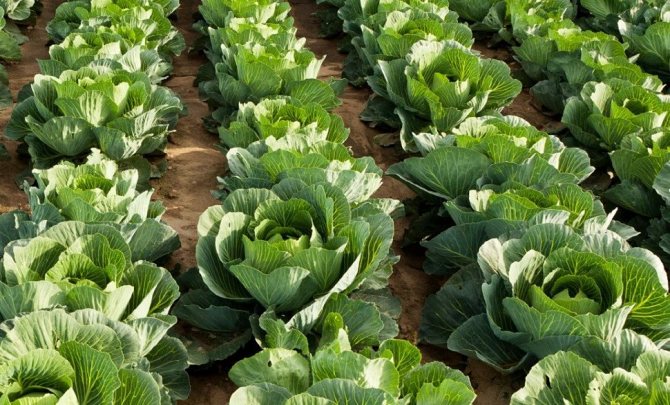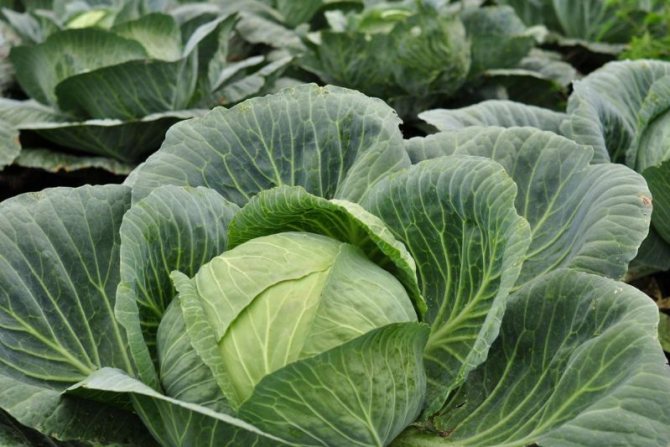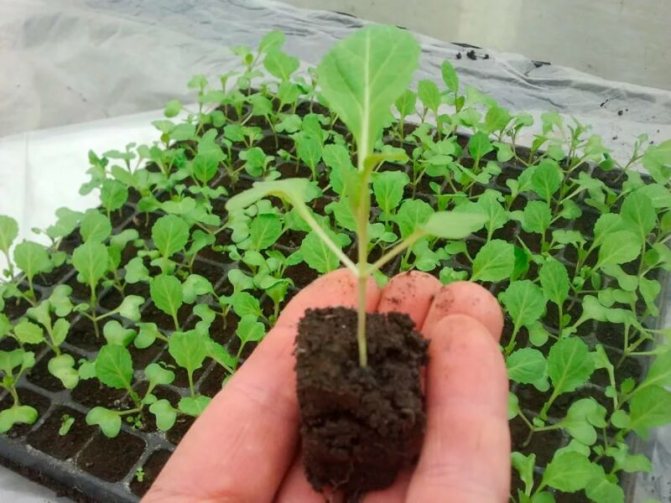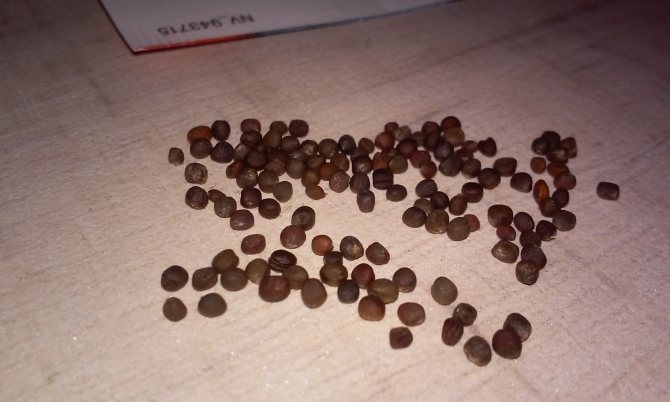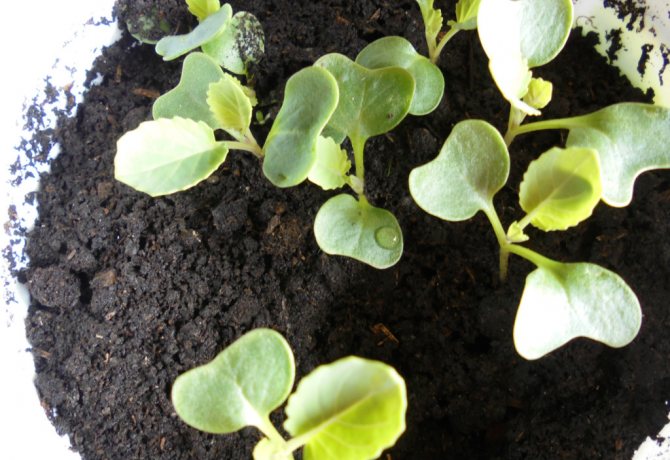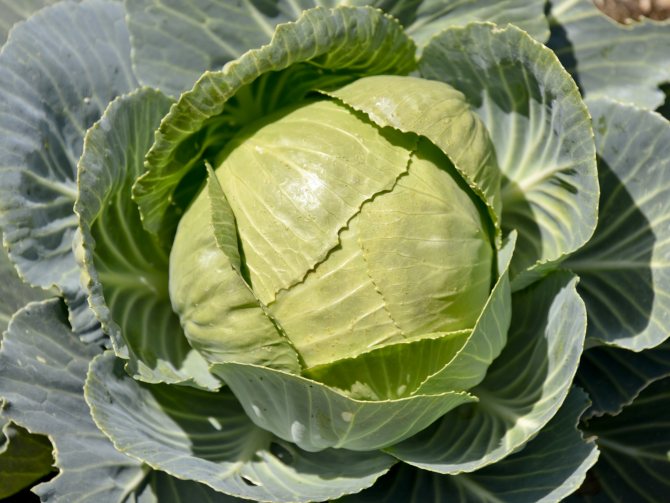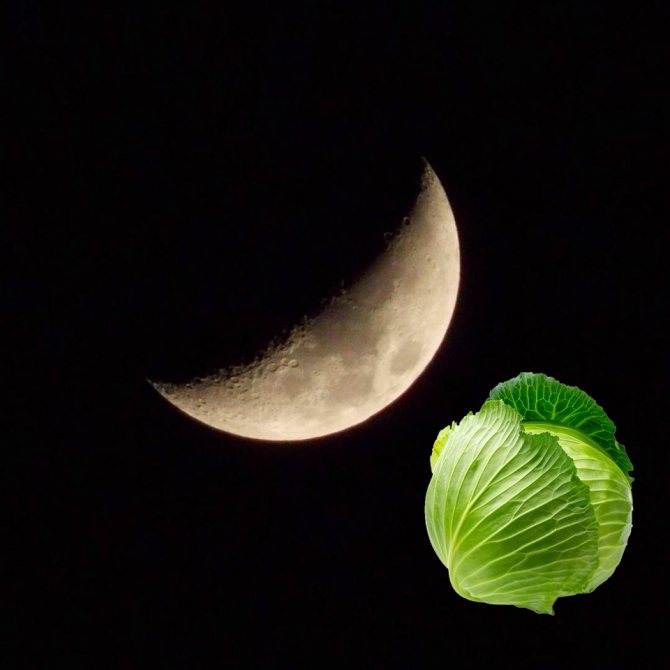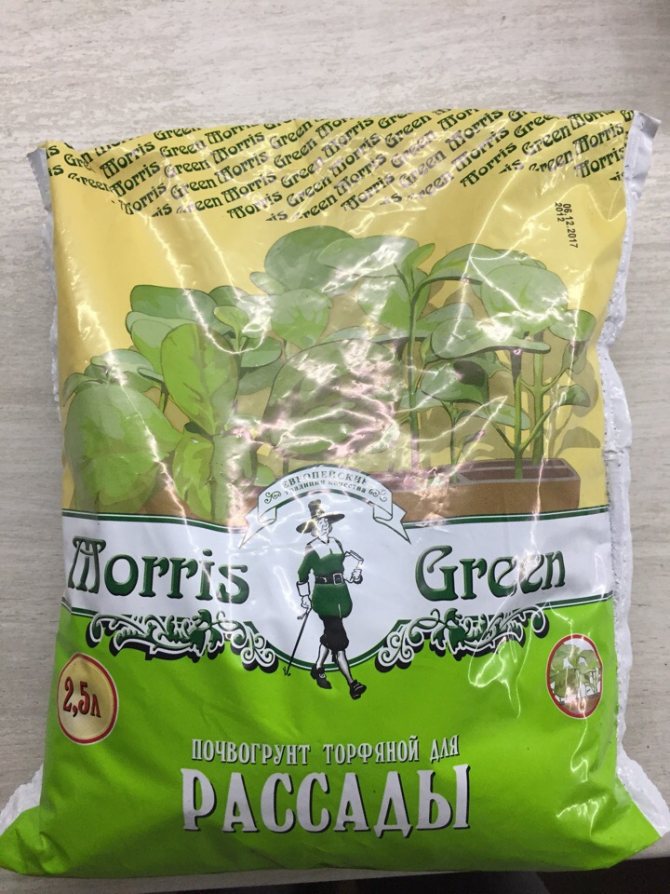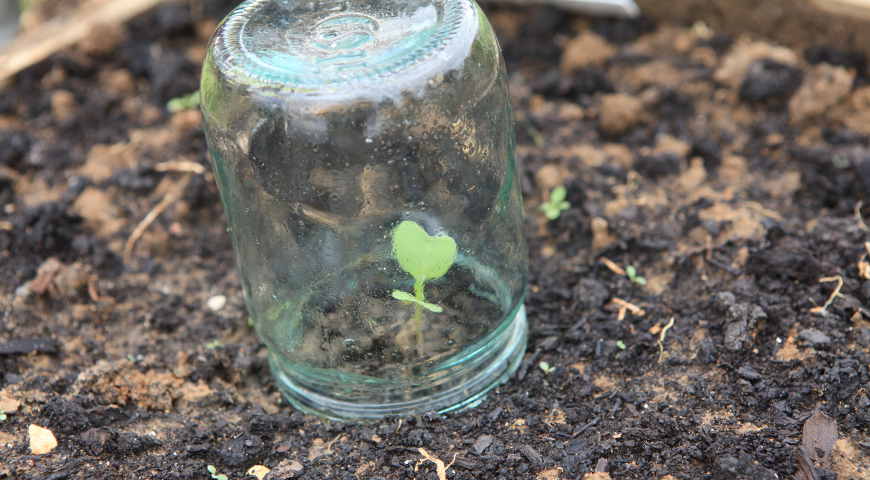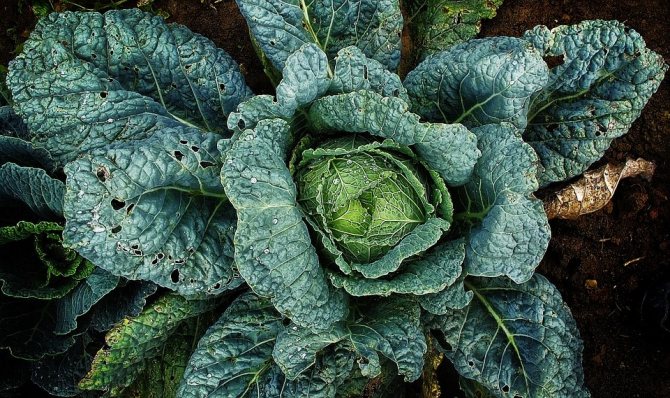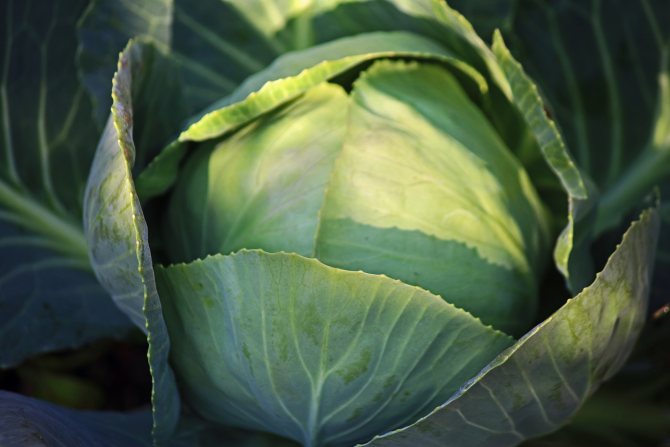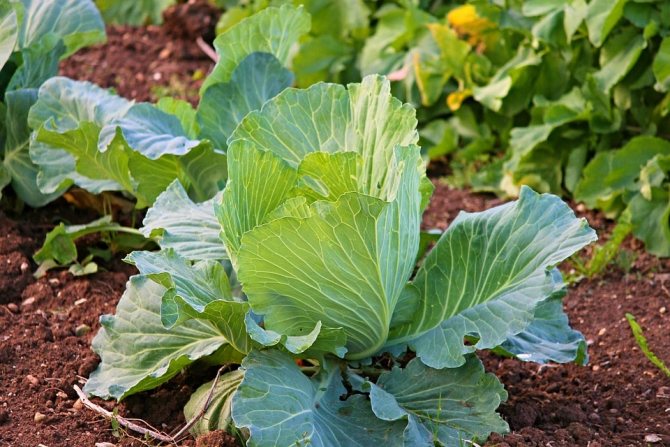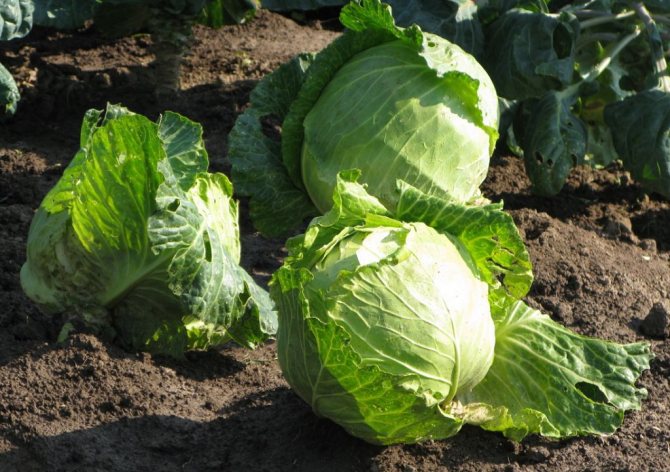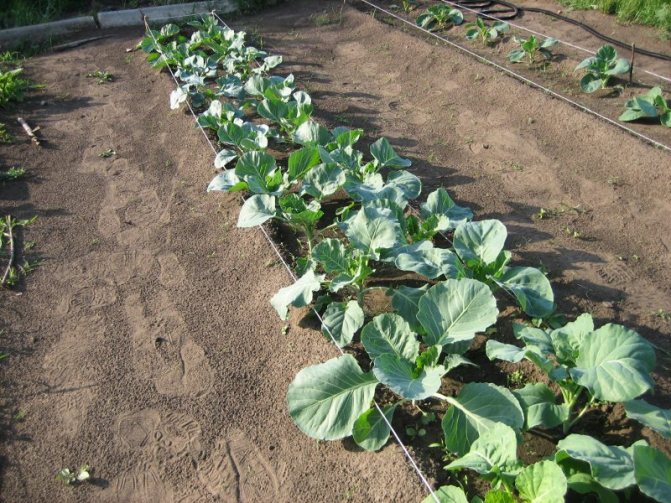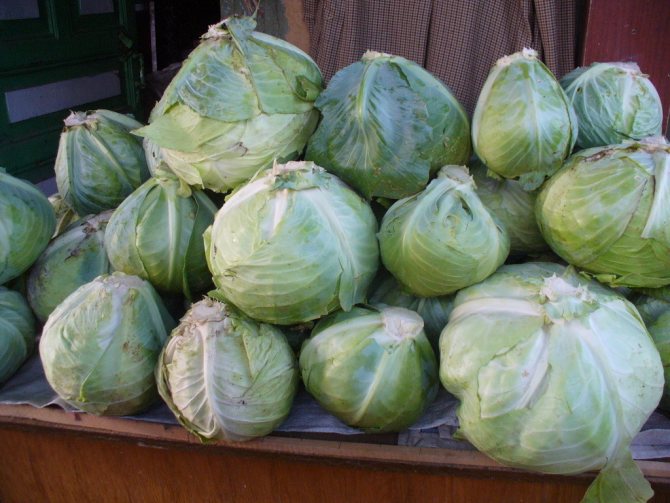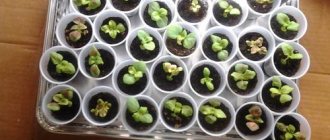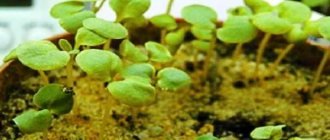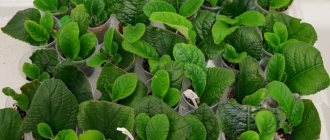Good evening, dear friends! Quite recently, we sorted out the lunar sowing calendar of the gardener and the gardener, now it's time to use it. Today we will rely on it when analyzing such questions - how and when to sow cabbage for seedlings after all? Most summer residents, already in the middle of winter, are thinking about planting cabbage. To do this, you need to select good soil and high quality seeds, as well as the best time for sowing. To get a good harvest, you need to plant the seedlings on time.
So when to start sowing seeds? Each gardener decides for himself. And if you are still undecided, use the advice of our today's article.
When to plant cabbage for seedlings in 2019
The timing of planting any crop, including cabbage, primarily depends on what climate is present in a particular region. That is, weather and climatic conditions are taken into account.
It is clear that in cold weather, plants develop more slowly, and seeds for seedlings should be sown earlier. However, in the southern regions, the timing of planting seedlings in open ground is earlier than in the northern ones. So don't forget about that as well.
According to popular beliefs and according to the advice of the lunar calendar, it is best to plant it on seedlings during the period when the moon is growing.

The table below shows the favorable and unfavorable terms of work with this vegetable crop.
| Favorable days for planting | Unfavorable days for planting |
| February - from 8-10, 20-22, 25-26; March - from 7-12, 15-16, 22, 28-29; April - from 6-8, 11-12, 17-18, 24-25, 29-30; May - 4, 15-16. | February - from 4-6, 19; March - from 5-7, 21; April - from 4-6, 19; May - from 4-6, 19. |
In addition, the planting depends on the variety. If you need to get results quickly, then it is best to sow early varieties. If you are going to store cabbage for several months, then medium. And naturally, it is better to use seeds of late varieties for storage for the winter.
It is clear that all varieties have their own growth and development period. And in accordance with this, all of them are planted in open ground at different times.
Let's look at these terms for the white and red varieties:
- for early varieties, this period is 50 - 55 days
- for medium - it is 40 - 45 days
- and for late varieties it is the smallest, only 30 - 35 days
And here are the timelines for other varieties of this popular culture:
- for broccoli, it will be 45 - 50 days
- for color, this period is the same and is 45 - 50 days
- and for the Brussels one - it is the longest, and is almost two months, or rather 50 - 60 days.
- kohlrabi and savoy cabbage have a short period, it is only 35 - 45 days.
And of course you need sos
Good days for picking and replanting cabbage in 2020
The lunar calendar will help you choose an auspicious day for picking and transplanting cabbage in 2020. If you follow the list of these dates, the seedlings will take root very quickly.
- February: 3, 4, 6, 10, 11, 13, 14, 15, 17, 18, 20, 21, 24, 28, 29.
- March: 1, 3, 4, 5, 10, 11, 14, 15, 16, 18, 19, 21, 22, 25, 27, 29, 30, 31.
- April: 2, 6, 7, 9, 10, 14, 15, 16, 17, 21, 25, 27, 28, 29.
- May: 2, 3, 5, 6, 8, 9, 12, 13, 14, 19, 20, 21, 23, 27, 28.
There are emergencies when a transplant needs to be done urgently. For example, with plant diseases. Then you do not need to wait for an auspicious date to save the seedlings.
Features of growing different types and varieties of ripening
As we have already determined, there are different varieties and types of this culture. And they all have different ripening periods. Therefore, they are planted at different times and at different times.
In the northern regions, early varieties can already be sown in mid-February or early March. But April is the most suitable time for sowing a culture of medium ripening varieties. And they begin to sow seeds from the very beginning of the month, without delay.
But with late varieties, you can wait a little and start planting only by the end of April. There is a lot of time, and the cabbage will have time to grow and ripen, and gain strength for long storage in the winter.
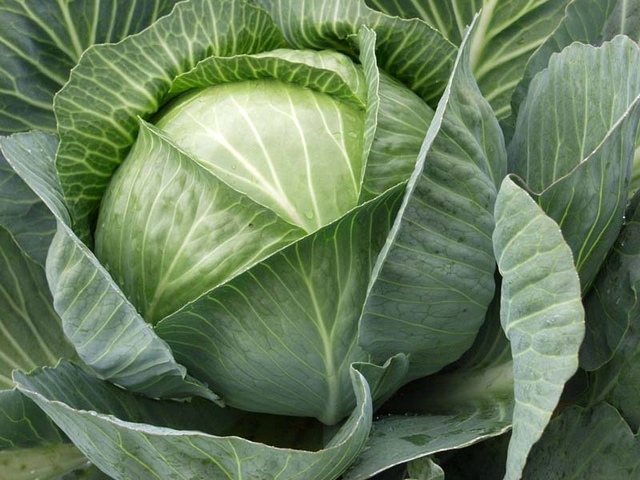

Now let's look at this issue in more detail, literally for each variety and species. As we could see, there are quite a few of them. And let's start with the most popular and beloved - with a white-headed beauty.
- February 15 - March 15 - planting dates for early maturing varieties
- March 1 - March 31 - mid-season varieties are planted
- March 15 - April 15 - late varieties can be sown
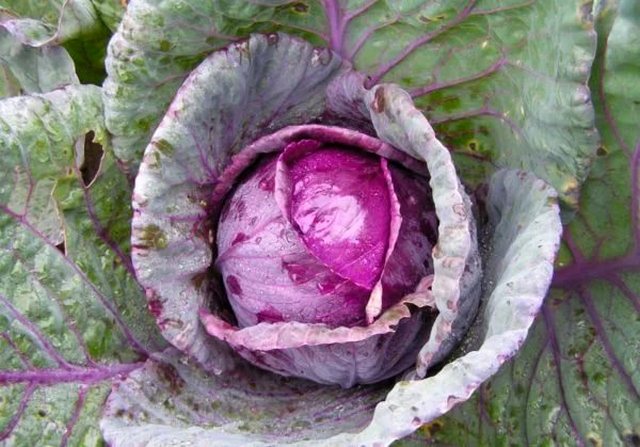

For red cabbage, these terms are as follows:
- March 15 - April 15 - seeds of early maturing varieties are sown
- March 30 - April 30 - you can engage in planting mid-season and late varieties
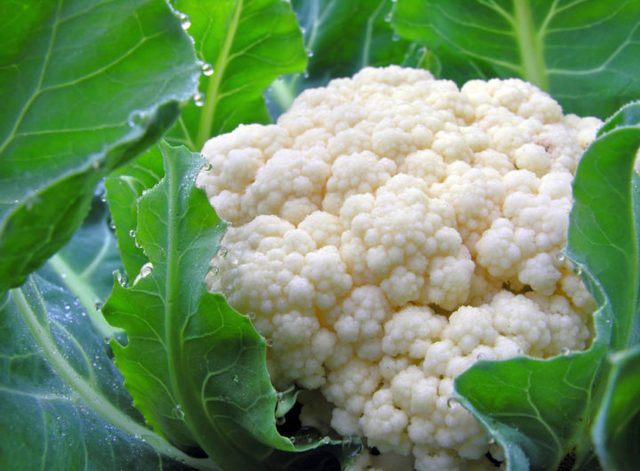

Cauliflower is a favorite in many garden plots and is grown more and more actively every year. And there are also early and mid-season varieties.
- March 15 - April 15 - sowing dates for the first of them
- April 1 - May 15 is just the time for the latter. Often, mid-season varieties are sown for seedlings already in greenhouses with the onset of warm days. Then they are planted in open ground.
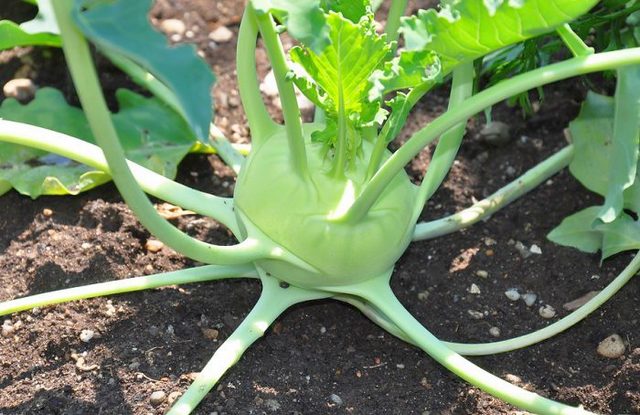

Kohlrabi is a storehouse of vitamins, and just a beautiful and original vegetable culture. They love to grow it, and most importantly they like to harvest - unusual beautiful forks.
- March 15 - March 30 - sowing dates for early maturing varieties
- April 1 - April 31 - medium varieties are sown
- all late varieties are sown from May 1
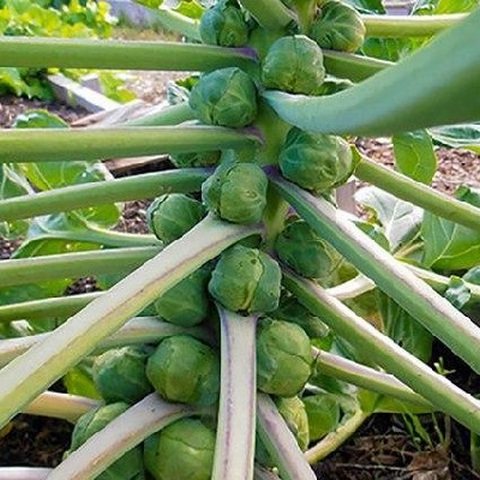

This lovely "Brussels" beauty is not often grown in our gardens. But if she has already settled once, she will become their permanent resident.
- March 1 - April 1 - it's time to sow the early varieties of beauty
- April 1 - May 1 - it's time for medium varieties
- April 15 - May 15 is the best time for late varieties
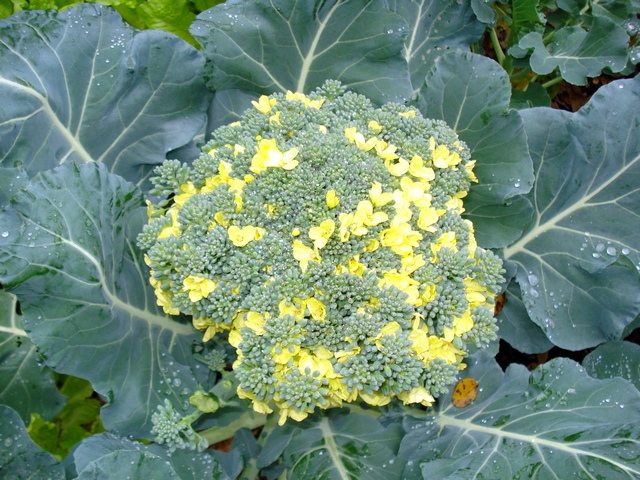

Broccoli - it even has a beautiful name! And what she is like! It’s a pity to even cut it when it’s ripe. How not to plant her in the garden with our usual Russian beauty. And what are the deadlines for her?
- March 1 - April 1 - early varieties, or directly into the ground from May 15 to June 15
- March 15 - April 15 - time to sow mid-season varieties
- April 1 - May 1 - you can just sow seeds of late varieties.
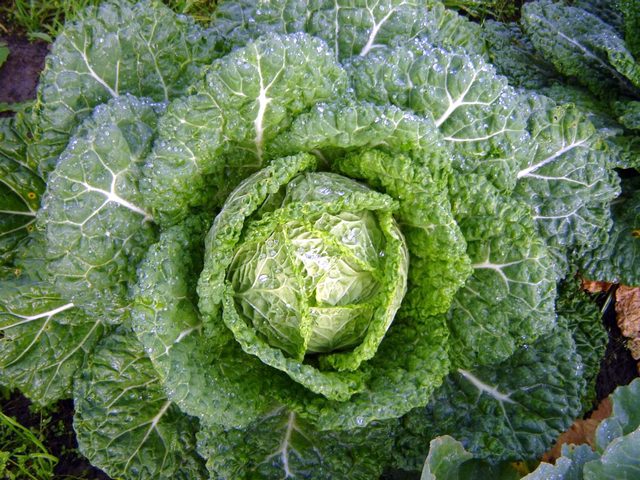

And we haven't forgotten the overseas savoy cabbage either. For her, the terms are:
- February 15 - March 15 - earliest varieties
- March 15 - April 15 - medium and late varieties
And at the beginning of the chapter, we also talked about climatic zones and the peculiarities of sowing in them.
So, in the Urals and Siberia, it is customary to sow seeds for seedlings from about mid-April. This is the case if we are engaged in planting early maturing varieties. And at the end of April, you can prepare seeds of medium and early ripening varieties.
In the Volga region, sowing early ripe cabbage begins in mid-March, and continues until early April. And already, starting from the first April days, mid-season and late varieties are sown.
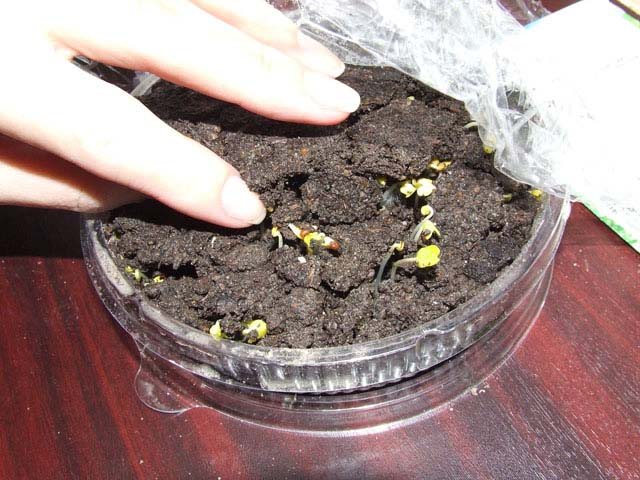

In the Moscow region and in central Russia, they also begin to sow from mid-March, and middle and late varieties are cherished until mid-April. And there they are already beginning to sow and grow seedlings with might and main.
Planting seeds in a greenhouse
If you have a greenhouse on your property, you can try growing cabbage seedlings in it.
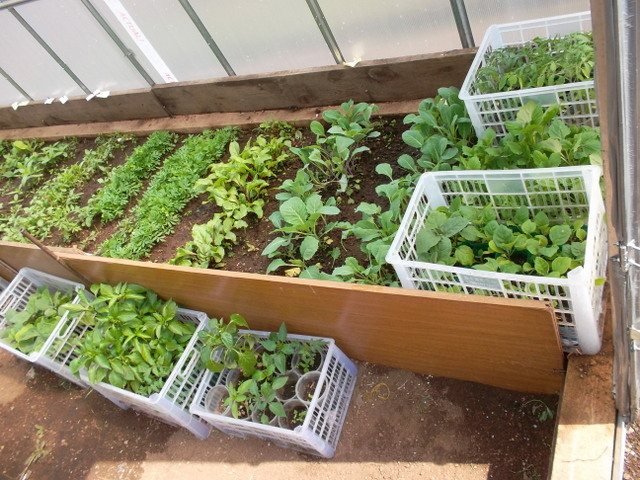

In such a place, the rays of the sun do not harm the sprouts. The soil is not drained as quickly compared to an apartment. In the greenhouse, you can create the most optimal microclimate for seedlings. These are the main advantages of growing seedlings in a greenhouse.
The seeds, as well as for the greenhouse, must be dried. Sowing is carried out in terms of ripening:
- from late March to mid-April - early variety;
- all April - mid-season and late varieties.
The required number of grooves is made on the bed. The width between them is 15-20 cm. After that, it is necessary to water them well. Scatter the nucleoli into the grooves. For 1 square centimeter - no more than 3 pieces. Then sprinkle them with earth - 1-2 cm.
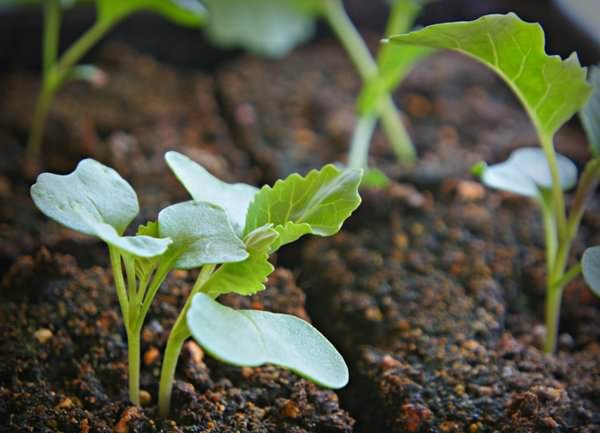

When the sprouts have a pair of real leaves, it is necessary to carry out prophylaxis against cruciferous fleas. To do this, we treat the cabbage with an insecticide. After the formation of 4 leaves, add a new layer of soil (3-4 cm). This will help avoid curving the stem. Densely sprouted seedlings - we cut through, pulling out weaker bushes.
If this could damage a nearby plant, simply cut the weak bush to the root.
Methods and features of growing from seeds
Cabbage loves full daylight. It needs at least 12 hours of light to bloom and set. If there is not enough light, there may not be germination. Early maturing varieties, and those ripen almost 90-100 days after sowing.
All this must be taken into account when choosing a landing method. And there are two of them. The most common is seedling and the second less popular is seedling.
Seedling method of growing
Since planting seeds for seedlings is the more common and practiced method, we will look at it at the beginning.
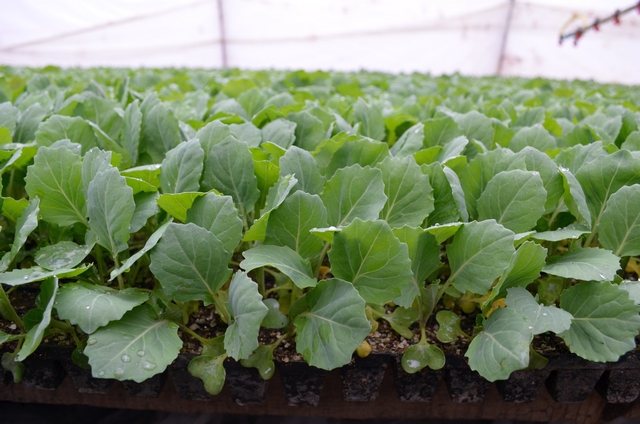

If all the work on growing seedlings is divided into stages, then we can distinguish (conditionally, of course) such stages as:
- soil preparation
- planting seeds
- seedling care
- picking and hardening
- planting seedlings in open ground
As for the soil, it is now easier to get it in the store. But if you decide to cook it yourself, then prepare the soil in the form of a mixture of peat and compost, which consists of humus, earth and sand. Moreover, the sand should be no more than five percent of the total mixture.
Having prepared the soil, we prepare the container for the seeds. Here you can take either a common box for all seedlings at once, or use separate cups for planting. In this case, you will not need to dive the seedlings, transplant them later.
We fill the prepared containers with earth.
A day before sowing, it should be thoroughly spilled with a solution of drugs such as Gamair and Alirin-B.
If we use a container for a general planting, then we make shallow grooves in it 1 cm deep. The distance between them should be at least 1 cm, and preferably a little more. The soil must be slightly moistened by sprinkling with a spray bottle, then sow the seeds at a distance of 1 cm.
Then sprinkle the seeds with earth and lightly spray the earth again. Then we put it on the windowsill, and wait for the shoots. The optimum temperature for this is 25 degrees Celsius.
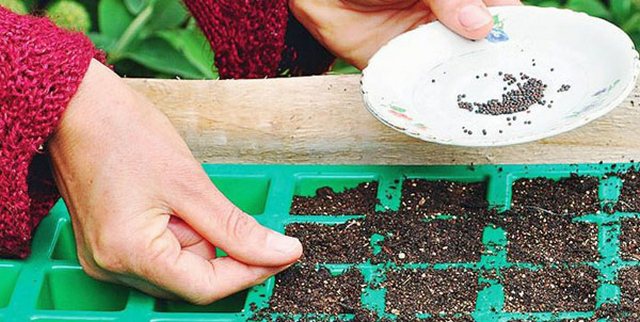

The first seedlings will see the light in a week. And there will appear friendly, eye-pleasing seedlings. After that, we lower the temperature to 17 degrees for a week. Watering should be done sparingly so that there is no excess moisture. It is best to water with a syringe or rubber bulb. In this case, the small tender roots are not injured.
Seedlings dive very small, about 14 days after germination. After that, the small sprout adapts for 7 to 10 days, and then begins to grow and develop again. The best temperature for this is 20 degrees. Watering for the entire growth period should also be moderate. And also it is necessary to provide the seedlings with a sufficient amount of light.
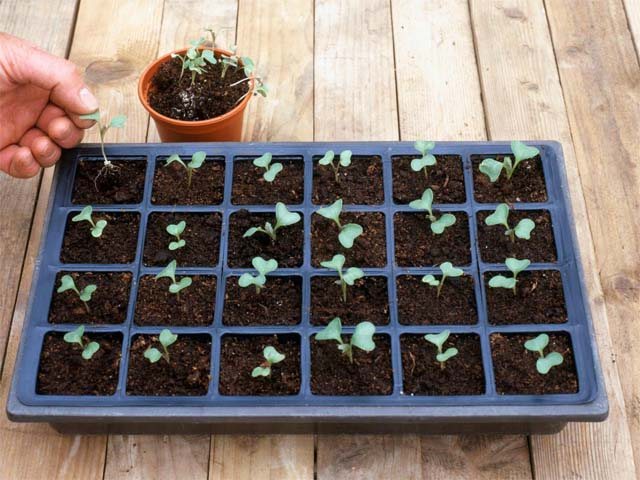

With the onset of warm days, it's time to slightly temper our sissy. To do this, 12 days before disembarking in open ground, you can first open the window for a short while, over time this period can be slowly lengthened. And after a few days, you can leave it for a short while on the cool balcony. And also gradually increase the time of her stay there.
Seedless growing method
The second method of growing is seedless.As is clear from the word itself, it implies planting seeds directly into open ground.
Here, you need to prepare the seeds even more carefully than for seedlings.
- Sorting
- Culling
- Soaking in warm water for 15 minutes
All these are significant stages and activities for the preparation of seeds.
After that, you can start sowing. We sow seeds to a depth of 2 cm. It is usually considered that 10 square meters. meters, 1.5-2 grams is enough. seeds.
As soon as the first three leaves appear, it is necessary to thin out and remove weak shoots. After the appearance of 5-6 leaves, one more, the last thinning is done.
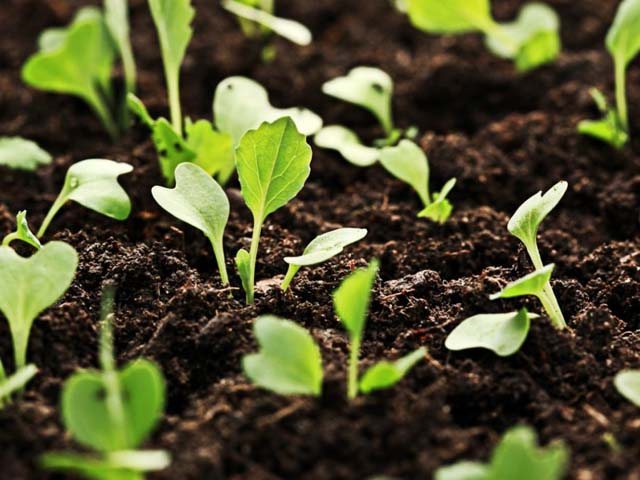

For this growing method, care for the seedlings is carried out in the same way as in the previous method.
Substrate preparation
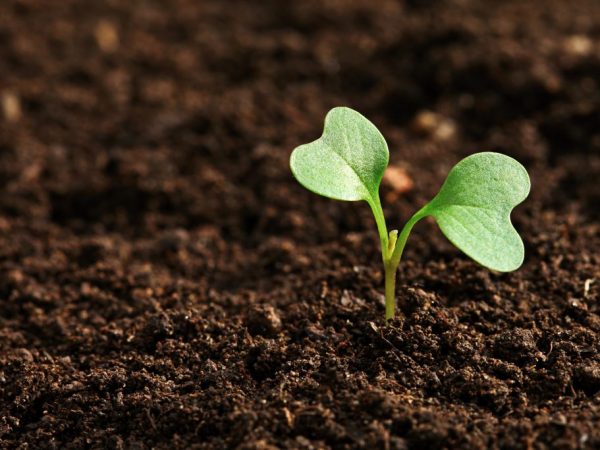

Soil quality plays a big role in plant development
Soil quality plays an important role in the successful germination of seedlings and the production of quality seedlings. In a poor soil mixture, even the highest quality seeds may not give the expected result.
Planting early cabbage for seedlings is carried out in a special substrate. Harvesting has been carried out since the fall.
Such a substrate can be bought at a gardener's store, or you can make it at home:
- humus - 1 kg;
- turf - 1 kg;
- ash - 150 g per bucket of soil.
The ash in such a soil mixture will become not only an excellent source of vital components for seedlings, but also disinfect the soil from various diseases.
For early cabbage for seedlings, you can use another soil mixture, for example, based on peat. The main condition for a soil mixture is its moisture and air permeability.
The only rule is the use of garden land in which plants of the Cruciferous family were previously grown is strictly prohibited. Such soil is likely to contain infections.
When to plant cabbage for seedlings
And so, we decided to plant our favorite vegetable crop in a seedling way. And we have already decided on the varieties and timing of planting it in open ground. We have already figured out this issue well. I hope everyone understood how to count and calculate.
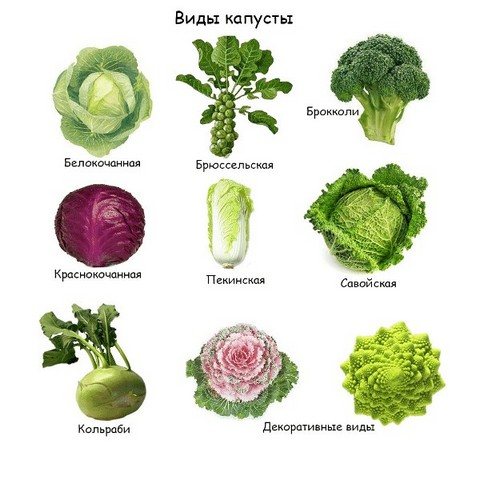

We know that the first harvest of early maturing cabbage can be harvested in July. If you count, it must be planted no later than the first decade of March. It will be late in late March. This is the time for medium and late varieties.
It is clear that these dates are very approximate. After all, we also know and have already considered that the main factors are also the climatic conditions of the area where you are planting.
Moreover, even year after year is not necessary. Either in March all the snow had already melted, or else it was a meter thick. That is, the weather conditions are such that the terms must be revised and shifted to one side. All this must be taken into account. And also take into account how many seedlings need to grow in home heat before they are planted in the ground.
There are many calculations. And below is a sample table that may help a little with the sowing timing of different varieties.
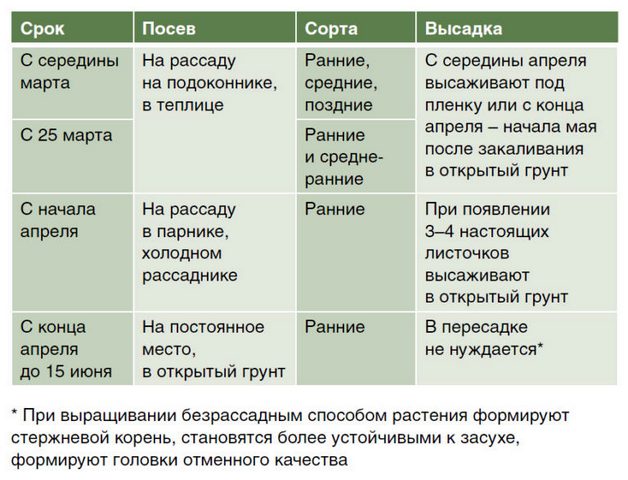

Variety selection
Cabbage grows in almost every vegetable garden, is healthy and has an excellent taste. A wide variety of dishes are prepared from it, consumed fresh, salted, fermented and stewed. To get a good harvest of this vegetable, you need to grow high-quality seedlings.
The first step is to determine the variety that you will grow. The modern seed market offers many varieties of early maturing cabbage for growing seedlings. Only a few of them are most popular with gardeners:
- June;
- Kazachok;
- Ditmar early;
- Parel;
- Copenhagen market;
- Golden hectare;
- Transfer;
- Dumas;
- Zarya;
- Malachite.
Early cabbage varieties do not give such large yields as mid-ripening and late ones. The weight of cabbage heads of early varieties reaches no more than 1 kg with an average density. The palatability is high enough. The heads of cabbage grow juicy and sweet.
Dates of planting for seedlings of early cabbage of different varieties
Many sow early cabbage to get an early portion of fresh vitamins.Not much is planted, mainly using medium and winter varieties. After all, they are salted, fermented, salads are prepared and stored all winter.
But the early beauty is too good and tasty, so everyone tries to grow her as early as possible in time. Therefore, let's briefly go over the timing of its planting.
When buying seeds, be sure to pay attention to getting the variety you want. In our case - early. There are early varieties in almost all types and varieties of our heroine. And for all of them different sowing dates. As a rule, there is information about this on the packaging. You can also find there the approximate dates for sowing and planting in open ground.
Early varieties take the longest to be kept at home. This means that some varieties are already beginning to be planted in January (for example, Savoy).
In the chapter above, we have already discussed in detail when which species should be sown. It remains only to adhere to this.
Let me remind you:
White-headed and red-headed beauty is sown 40 - 60 days before planting in the ground; kohlrabi - in 30 -35 days; Savoyard - 40-50 days; Brussels and colored - also in 40 - 50 days.
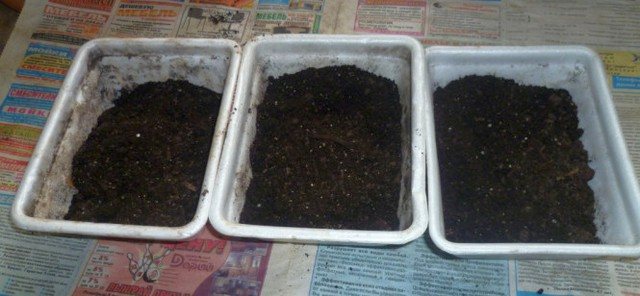

Now let's take a closer look at how to plant this or that species.
When to plant seedlings in open ground in Moscow and the Moscow region?
In the Middle Lane, seedlings need to be planted in the second half of April - early March. And in order for the seedlings to mature by this time, cabbage seeds are sown in early March.
- early cabbage - early May,
- medium - mid-May
- late - end of May
In the Leningrad areas the terms are almost similar to those near Moscow, only you need to add 1 week.
And we wish you success in growing a green beauty.
Leave your comments below, share the article with your friends on social networks.
Author of the publication
Planting cauliflower seedlings at home
We won't come up with anything new here either. Depending on the variety, it is necessary to sow seeds at one time or another.
Below is a table to help you determine these deadlines. And also in it you can find out what varieties exist.


And so, judging by the table, the most optimal seedling age is considered to be from 25 to 50 days. We find our variety and see what age is considered optimal for it.
In accordance with this, we begin to deal with seeds. We iterate over them and reject unnecessary ones. We decide on the date. This is an important point. You need to be sure that by the time the seedlings require a transplant to the street, it should already be comfortable and warm enough for it.
We sow seeds either in separate cups or in a common container (we have already considered planting methods today). Seedlings should appear in 7 - 10 days. This will happen if the temperature was comfortable for this, that is, 24 - 25 degrees.
But after their appearance, such a temperature will already be excessive, and it should be halved. An ideal spot on a sunny windowsill.
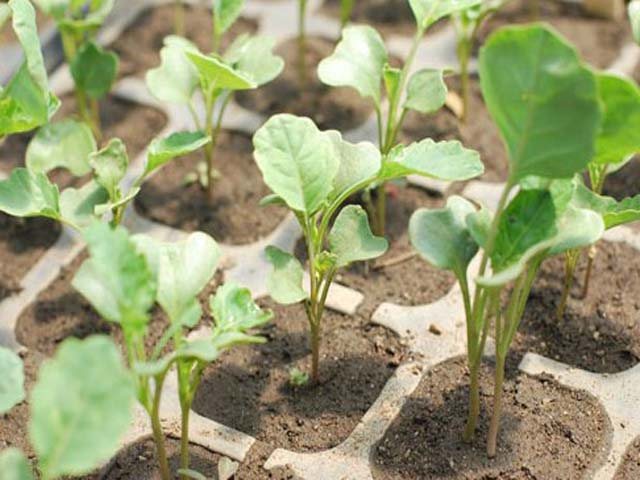

If seeds were planted in a common die, then it is necessary to dive in time. This time comes, as a rule, on the 12th day after germination. The day before this important event for the plant, the plate must be kept at a temperature of 23 degrees again for a day.
And after the procedure, the temperature regime is the same as before the transplant, that is, 12 degrees Celsius.
A week before planting in the ground, you can start hardening. To do this, open the vents and take out the seedlings to the balcony.
Under such conditions, it then stands until it is planted in open ground.
How and when to dive cabbage seedlings
The timing of the picking of cabbage seedlings is determined by the state of the plant - seedlings should be in the phase of one or two true leaves. It is advisable to perform the procedure on a cloudy day. The soil can be used the same as for sowing.But as a landing container, you can choose both individual and general containers or bulk cassettes. The main thing that the diameter of individual containers was 5-7 centimeters, and landing in a common box was carried out according to the 5x5 centimeters scheme.
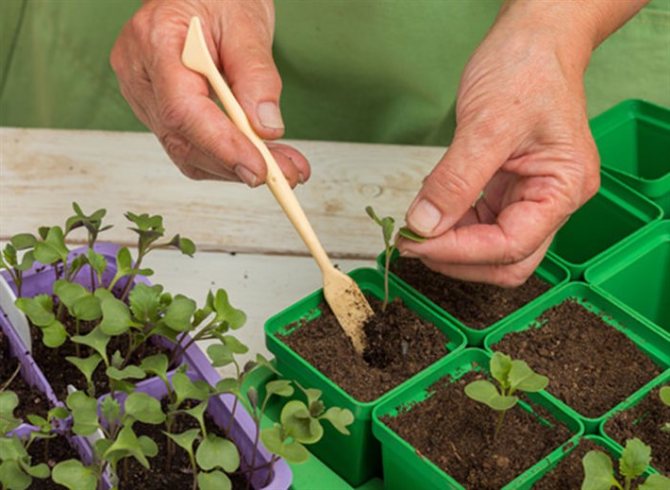

When to plant June white cabbage early
An early ripe beauty that all gardeners who grow this crop in their summer cottages want to have. White-headed varieties are undoubtedly the most grown, and at the same time traditional vegetable crop. And of course the most beloved one.
The most popular among its many varieties are the early varieties. This is due to the fact that in June you want to get a fresh harvest. Hence the so popular name - "June".
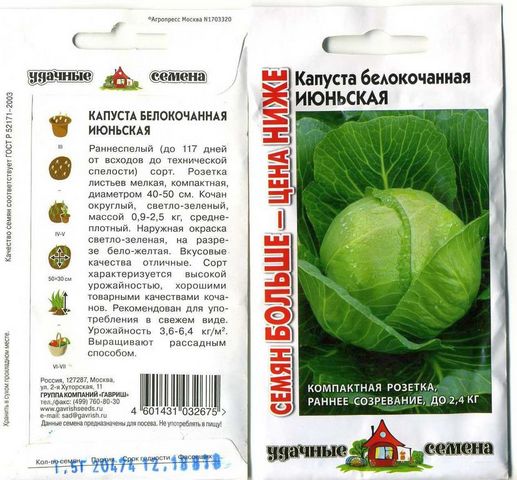

The main feature of the "June" pet is the fact that about 100 days pass from the beginning of sowing to the harvest. Therefore, they begin to plant it from mid-March, and in some regions, depending on the circumstances and weather conditions, until mid-April.
They did not come up with any special conditions for its cultivation. As well as for all other species and varieties, seeds are sown to a depth of 1 cm, with a distance of 1.5 - 2 cm from each other.
Until the shoots appear, the optimal temperature for this event should be 18 - 20 degrees, with a plus, of course. And when the seedlings hatch, the temperature needs to be lowered to 14 degrees. It is important to maintain this temperature for 5 - 6 days. You can then grow simply at room temperature on a windowsill.
Do not forget about the light, it should be enough. Lack of light, or lack of it, contributes to the elongation of seedlings. And that doesn't make her stronger.
If the seedlings have sprung up quite tightly, then they must be sorted. The distance between them should be at least 1.5 cm. Usually weaker plants are removed. A week later, after a maximum of two, after the emergence of seedlings, they are dived into small containers, dropping to the seven-lobed leaves.
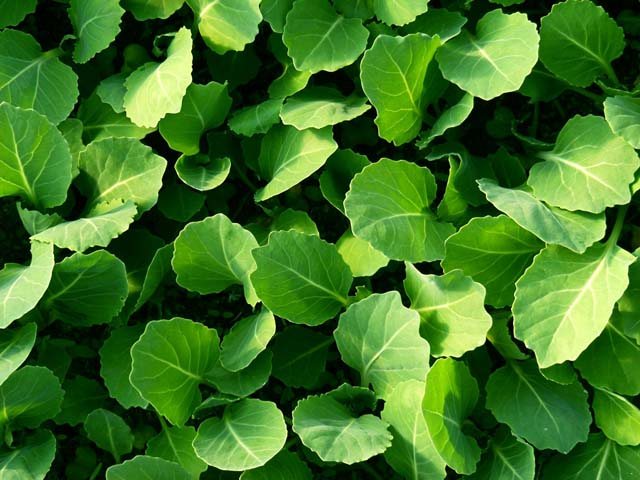

Then, two weeks later, the seedlings dive again, and this time they are already transplanted into separate cups.
In addition, this variety is also characterized by frost resistance. She is not even afraid of frosts down to -5 degrees. This can be taken into account, and with an early landing in open ground, you can not be afraid of this. And you don't even need to cover the plants at this time.
Purchase of planting material
For growing seedlings of early cabbage, you need to choose good seeds. The quality and volume of the head of cabbage yield depends on the quality of the seed.
Several secrets of the correct choice of material for sowing:
- It is better to buy seedling seeds in horticultural markets: this way there are more chances to buy high-quality and original seed material.
- If possible, it is better to purchase seeds from several producers: if one variety does not grow, the second will be able to compensate for it.
- High-quality seeds will be packed in thick paper with the name of the manufacturer, a brief description of the plant, planting rules and agrotechnical features on it.
- In accordance with the state register, the package must contain 2 names of the plant variety: in Russian and in Latin.
- The shelf life of seeds can be determined not by the stamp on the packaging, but by requesting a certificate from the sellers, which indicates their germination and the validity of the analysis - from six months to a year.
Planting dates for broccoli
Broccoli, of course, is not so often found among gardeners, but if you decide to plant it, then you need to adhere to some rules. Although the main thing in planting work is carried out in the same way as when planting other types of cabbage.
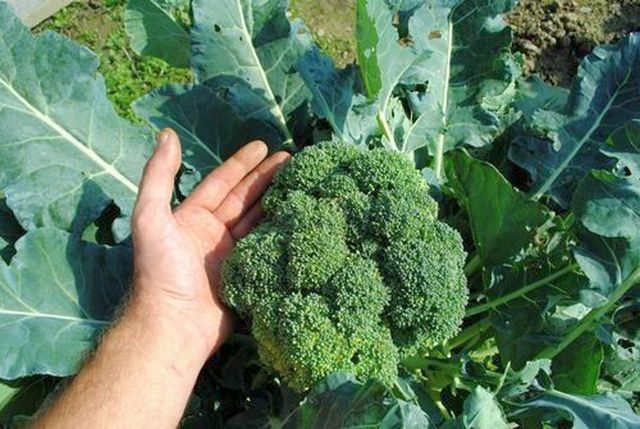

In order to get a harvest more than once, but several times, it is very convenient to sow seeds in 2-3 stages. The interval between them can be in this case from 5 to 15 days.
They sow seeds without any innovation, just like everyone else. First, dies are prepared, soil is scattered in them and processed.They sort out the seeds and sow them to a depth of 1.5 cm, the distance between the seeds is kept at 3 cm. The seedlings grow lush, so they need a little more space than usual.
Then the seeds are covered with earth and sprayed with a spray bottle. They are waiting for shoots in 7 - 10 days.
Let me remind you that the early varieties are sown 45 days before planting in the ground, and the later ones - 35 - 40 days. Here the difference is not so noticeable.
A special feature is that the seedlings are planted in parts. The first part is planted in the ground in early May (of course, if there are weather conditions for this). After 5 days, you can land the second batch, after another 5 - the next one. And after 5 - the last one.


In general, the grown seedlings can be transplanted to the garden bed within two weeks after the appearance of the first seedlings. But in any case, you should be guided by the weather.
And to deal with this issue once and for all, let's watch a video on the topic of planting broccoli together.
Now that we have all learned about cabbage varieties, about the timing of their sowing and cultivation, we can easily cope with planting, caring for and caring for seedlings. And we can easily grow any of the known species and varieties.
Good luck with your gardening business!
Author of the publication
offline 9 months
Seedling problems
When growing cabbage seedlings, you can face various problems. Below we will analyze the most common problems and talk about ways to solve them.
Seedlings turn yellow
There can be many reasons for the yellowing of seedlings:
- Lack of nitrogen (the most common cause).
- Lack of iron. A characteristic feature is that the leaves turn yellow all over the base.
- Lack of phosphorus. In this case, yellowness appears on the underside. Leaves can also turn purple.
- Lack of potassium. Only the tips of the leaves turn yellow.
You can solve the problem of yellowing of cabbage leaves by feeding it with complex fertilizer.
Sometimes the reason for the yellowness of the leaves in cabbage is the addition of river sand to the soil. It may contain heavy salts that poison the root system. In this case, transplanting seedlings into another earthen mixture will help.
Another reason for the yellowing of the leaves is infection.
Seedlings rotting
The most common cause of rotting seedlings is a fungal disease called Black Leg. This is a dangerous disease that can destroy all seedlings. The pathogen remains in the ground as a result of poor disinfection. With a black stem, the plants rot at the base. The development of the disease is facilitated by: high acidity, excess nitrogen and high humidity.
The only correct solution is to get rid of the affected plants, and transplant healthy ones into another container with clean soil.
Care errors and diseases of cabbage seedlings
Indoors, plants cannot suffer from frost, severe weather conditions, pathogenic microflora. Therefore, problems with the growth of seedlings can be solely for the following reasons:
- lack of light;
- too thick fit;
- unsuitable temperature (above 25-28 ° C);
- improper watering: decay of roots from stagnant water or, conversely, constant drying out of the soil;
- completely unusable soil;
- unsuitable for the dosage or composition of the feeding.
If these errors are not present, the seedlings develop fully. But if the pathogenic microflora is in the seedling soil or is transmitted with the seeds, it can harm the seedlings with constant waterlogging. Therefore, at the first signs of growth impairment, watering is stopped, the crops are dried in the sun, using a fan or an infrared lamp.
It also dries and disinfects the soil well, dried and hot sand in a pan, which is scattered over the soil.
In addition to drying, pasthenia is dusted with wood ash or sprayed with a 0.3% solution of hydrogen peroxide... These are common techniques that can stop the development of a disease if it has not had time to develop deep into the tissues of the plant. If the disease progresses, they use special means to fight, for example, Previkur.For the prevention of diseases, Fitosporin is used (according to the instructions).
A windowsill on the sunny side is the most valuable and scarce area for growing seedlings in the early stages. It is quite possible to grow cabbage seedlings on it, but it is often excessively warm there. And it is more rational to use this place for heat-loving crops - peppers, tomatoes, cucumbers and eggplants, which should be planted in February. And cabbage can be planted with seeds in late March - early April in unheated greenhouses or simple shelters, under arches made of glass reinforcement or wire, covered with a transparent film. In clear weather, the sun warms up such closed areas up to 20 ° C and higher, even if it is frosty outside. And at night, in case of prolonged cold weather, the shelters are covered with an additional layer of non-woven covering material, fabric or other available warm material.
Further care
As mentioned earlier, cabbage loves water. Nevertheless, excessive waterlogging for these plants is just as harmful as drying out. Plants especially need watering during the formation of a head of cabbage. The first month after planting, the seedlings are watered 2 times a week with about 2-3 liters of water for each plant. Then watering is done 1 per week for 10-15 liters.
Important! It is necessary to regularly loosen the soil to avoid the formation of an earth crust and provide oxygen to the root system.
Also, 3 weeks after planting seedlings in open ground, experienced gardeners advise to huddle the plants, and after another 1 week, repeat the procedure.
The first feeding is done after 2 weeks. To do this, use either specialized fertilizers for seedlings, or a mullein solution (1: 5): about 5 liters for each plant. The second feeding can be done after 10 days.
Seedlings - diseases and pests
The greatest danger to cabbage seedlings is improper watering. When overflowing, weakened plants are suppressed, they stop growing, but what causes the greatest concern is the development of the “black leg” disease. The stalk of the cabbage seedling turns black in the middle and the whole plant dies. Fungal infection is aggravated by improper watering, crowded plantings and poor ventilation. For treatment, it is necessary to shed containers with cabbage seedlings with a solution of foundationol.
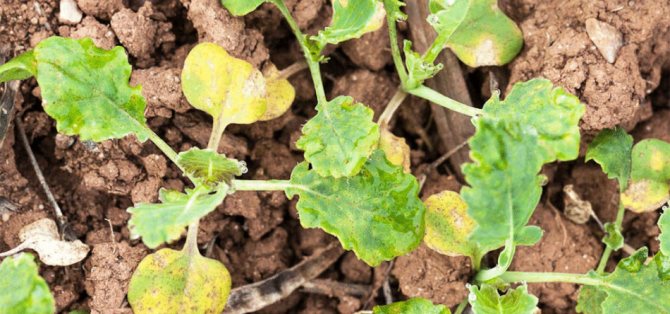

Young plants can be attacked by pests, especially aphids. Sucking juices from young seedlings, aphids spread viral infections that cannot be cured. Having found aphids on plants, you should treat the planting from the pest as soon as possible with the help of special preparations.
Many insects harm cabbage: cabbage fly, cruciferous flea beetle, scoops - all these pests are dangerous for young seedlings. Pest control should be timely and appropriate.
Seed disinfection
Disinfection is a mandatory procedure that is carried out before planting seeds. It allows you to disinfect seed material, eliminate the risk of infection with black leg, powdery mildew. After its completion, the cultivation of seedlings will be successful, and its quality will be excellent.
When buying treated seeds, it is enough to carry out one simple manipulation: steam them in warm water (about 50 ° C) for 20 minutes. and then immersed in ice water. Thus, the seeds will be hardened, their immunity to diseases will increase.
Not all cabbage seeds can be processed this way. therefore it is important to read the instructions on the packaging.
Before planting seeds, they are sometimes soaked in a weak solution of potassium permanganate for half an hour. This is also one of the methods for disinfecting seedlings.
Growing problems
Cabbage is quite sensitive to growing conditions, as a result of which, with improper care, certain problems arise.
Seedlings stretched out
Pulling seedlings is not uncommon. There are usually several reasons for this problem:
- lack of light;
- heat;
- excess nitrogen fertilizers in the soil.
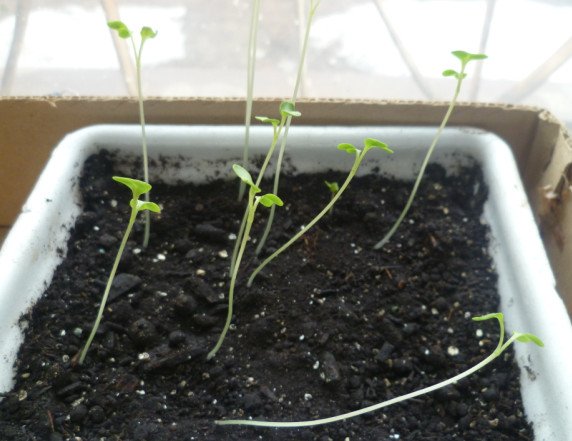

Cabbage seedlings are pulled out in low light
To ensure normal lighting, it is necessary not only to install an additional source, but also to use reflective materials (white paper, foil). As for the temperature, cabbage does not like heat and even more so heat. Under inappropriate conditions, it not only stretches out, but dies altogether. Therefore, it is required to provide an appropriate temperature regime.
If the plants receive an excess amount of nitrogen, then the leaves develop to the detriment of the root system. This indicates the need to stop feeding with a nitrogen content until the seedlings are planted in the ground.
Seedlings do not grow
The reason why cabbage seedlings do not grow at home is usually due to low humidity and high temperatures. To ensure normal conditions, seedlings are best placed in a greenhouse, where it is much easier to create the necessary microclimate.
The lower part of the stem dries out
The problem of drying out the lower part of the stem is caused by a lack of moisture in the soil, thickened plantings and too dry air. All these factors indicate the need to create and maintain optimal conditions for young plants. Cabbage is a moisture-loving crop that requires regular and moderate watering, and with too dense plantings, the seedlings simply do not have enough moisture. In this case, the seedlings need to be thinned out, and the stems should be lightly sprinkled with soil.
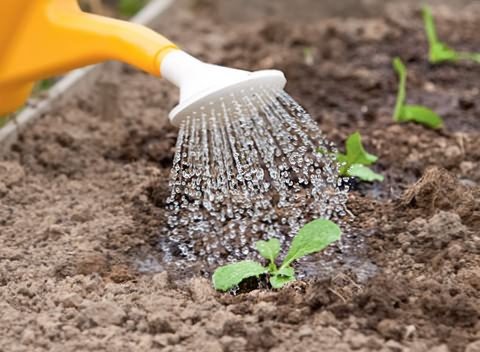

Cabbage is a moisture-loving culture
To increase the moisture level, the plants need to be sprayed periodically.
Seedlings wither
There are also situations when the leaves of a young cabbage wither. The reason may be excessive watering and the lack of loosening of the soil, as a result of which a soil crust forms, through which the supply of oxygen to the roots is difficult. In this case, the roots of the plants rot and the leaves wither. In addition, it will be useful to inspect the drainage holes of the planting tanks. If they are clogged, then the water simply has nowhere to drain. The cause of wilting can also be caused by inappropriate soil acidity.
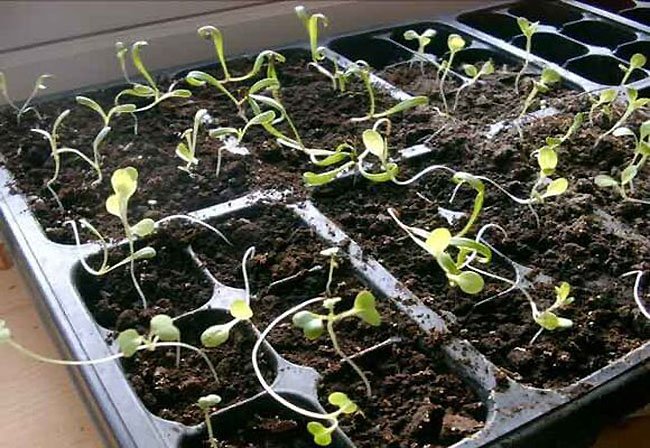

The reason for the wilting of cabbage seedlings can be caused by a lack of oxygen, a large amount of moisture in the soil, or inappropriate acidity.
Selection of containers for planting seeds
When sowing seeds, a gardener can choose a container for seedlings from a wide variety: wooden and plastic pallets, boxes, cups, containers. Most Reliable Capacities:
- Plastic, wooden containers. Tanks of this type are time-tested and easy to use. Suitable for sowing seeds and further picking cabbage seedlings.
- Plastic cassettes. Comes on sale with a lid and a pallet, which makes the work of the gardener easier. The cassette consists of cells combined into one, which makes it possible to plant the culture separately.
- Peat tablets. The main disadvantage of the container is the high cost and the need for regular watering.
How to prepare the soil for sowing cabbage seeds
Strong cabbage seedlings can be obtained if the soil nutrient mixture is correctly prepared. It is best to prepare the land for seedlings in the fall. It is acceptable, but less desirable, to prepare the mixture just before sowing the seeds.
Take one part of the turf and humus, a small amount of ash (10 tablespoons per 10 kg of soil) and stir well. Ash here will not only provide the soil with useful elements, but also prevent the appearance of a black leg on seedlings due to its antiseptic properties.
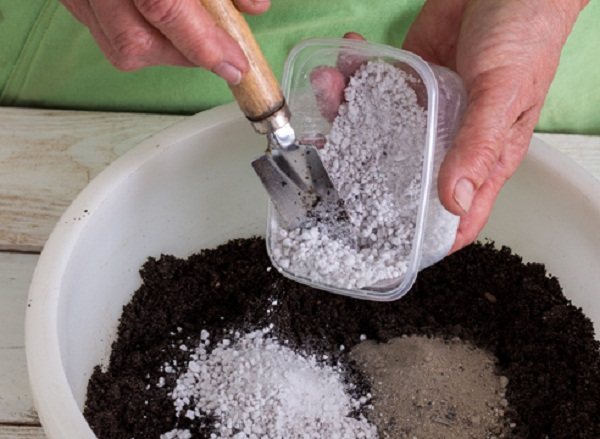

Preparing the soil for cabbage seedlings
The land should be treated with water with a small amount of potassium permanganate for disinfection. When preparing a soil mixture, it is necessary to adhere to an acidity indicator equal to or close to neutral.
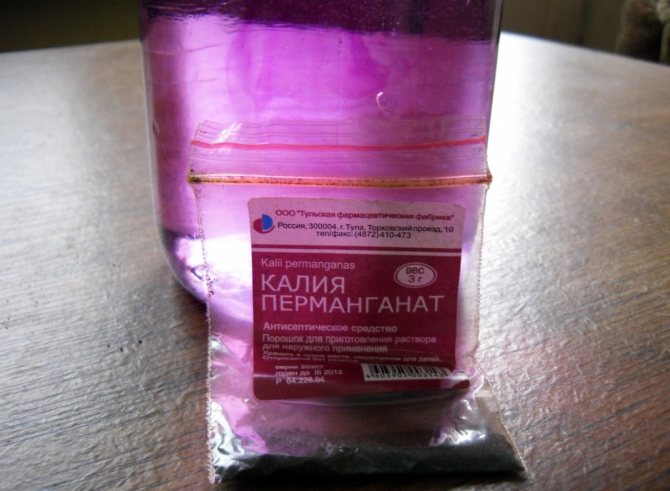

Potassium permanganate solution for soil cultivation
Of course, you can make an earthy composition based on sod as well as on the basis of other nutritional ingredients such as peat, for example.The resulting soil mixture should be air permeable and fertile.
On a note! Soil suitable for cabbage seedlings can be found commercially. For these purposes, not only a soil mixture intended directly for cabbage is suitable. The use of universal soil is also allowed. The soil from your garden is unsuitable, as using it increases the risk of infection of the seedlings.
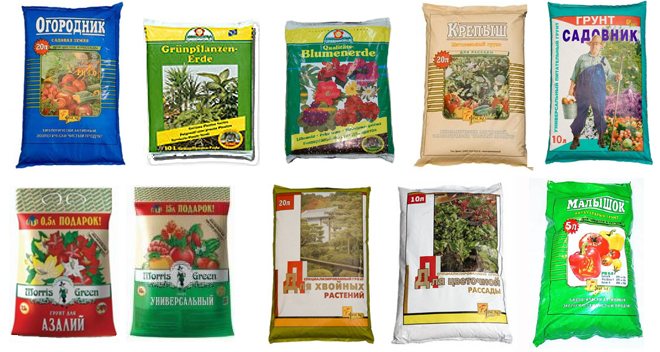

Seedling soil can be purchased at the store
Soil prices for seedlings
seedling soil
What can seedlings hurt?
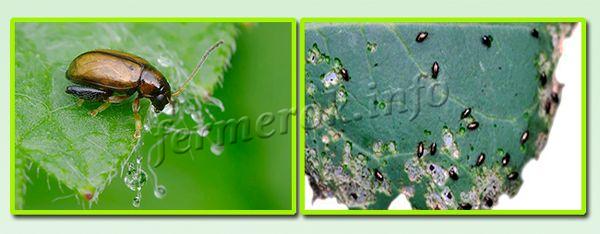

Cabbage seedlings are often attacked by a cruciferous flea
Cabbage seedlings can get sick due to improper temperature conditions, waterlogging, and if cabbage was planted in untreated soil. It is pointless to wait for the disease to pass by itself, it must be urgently treated.
- Cabbage seedlings are often attacked by a cruciferous flea. Treatment with Inta-Vir can help.
- Stopping (temporarily) watering will save you from the black leg so that the earth dries up. Saplings on top and the ground, sprinkled with wood ash.
- Root rot will disappear if the seedlings are treated with Rizoplan. For 100 ml of warm water, 1 g of the substance is taken. The tool is simply sprayed on the seedlings from above. You can also use Trichodermin. Under 1 plant, 1 gram of the substance is applied.
Sowing features
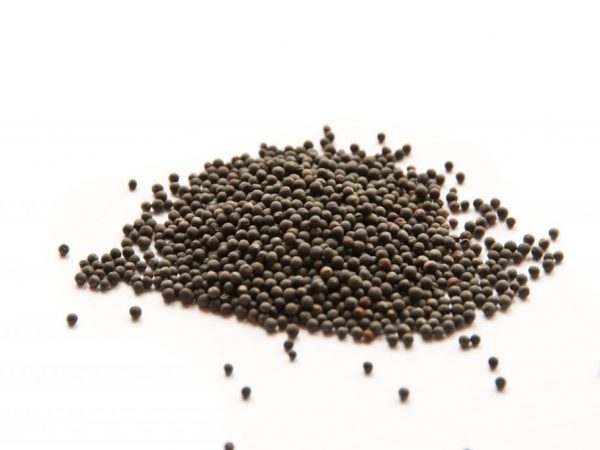

Seeds need to be prepared for planting
Planting seeds for early cabbage seedlings in March has some peculiarities. In order for the plants to grow strong, stocky and easier to transfer the planting to the garden, they need a pick, so they are first sown in volumetric containers, and then planted separately.
It is necessary to plant in special seedling boxes or trays. First, the soil is moistened abundantly, then the seeds are planted. Until the seedlings germinate, you do not need to water them: it will provoke the appearance of a black leg.
The planted seedlings are placed on a windowsill where there is good daylight. At the same time, it is important to protect young seedlings from the sun's rays, which are very dangerous in spring.
After mass germination, seedlings are thinned out. At this stage of growth, plants need to leave a feeding area of 2 x 2 cm.
Seating
This is one of the main stages of growing early cabbage seedlings. In 10 days after thinning, the seedlings will grow up and release 1-2 leaves. This is the time when they need to dive into special cassette containers, maintaining a 3 x 3 cm landing pattern.
Plants can be planted in separate containers 2 weeks after picking. You can plant seedlings in pots, plastic glasses. The size of such a container should be 5 x 5 cm.
Before planting seedlings, new containers are treated with a weak solution of copper sulfate to prevent the appearance of fungal infections.
When to sow: lunar calendar 2019
You should immediately decide on the order of sowing cabbage seeds of different ripening periods. Not everything is unambiguous here, although there is logic. Seedlings of any varieties are planted in a permanent place at the age of 40 to 50 days. If the cabbage is early, then you need to take all the benefits of this term and get vitamin products as early as possible. This cabbage will not be stored, the heads of cabbage are usually small, not very dense, they are happily eaten in the form of salads. Therefore, early varieties are sown first for seedlings. Usually in the middle lane this happens in mid-March, but if there is such an opportunity (southern region or greenhouse), it can be done in February.
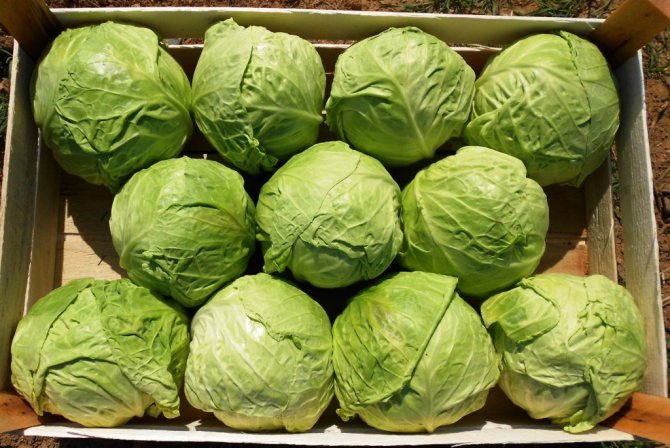

Early cabbage has small heads of cabbage, but the meaning is not in size: the road is a spoon for dinner
Late varieties of cabbage are intended for long-term fresh storage in cellars. Its heads of cabbage reach ripeness in the autumn months, they even end up in the beds under light frosts, which does not bother them at all: they should be put into the cellar as late as possible. Therefore, sowing too early is unnecessary.However, based on the length of the growing season, it turns out that the approximate sowing dates for the late varieties are in mid-April.
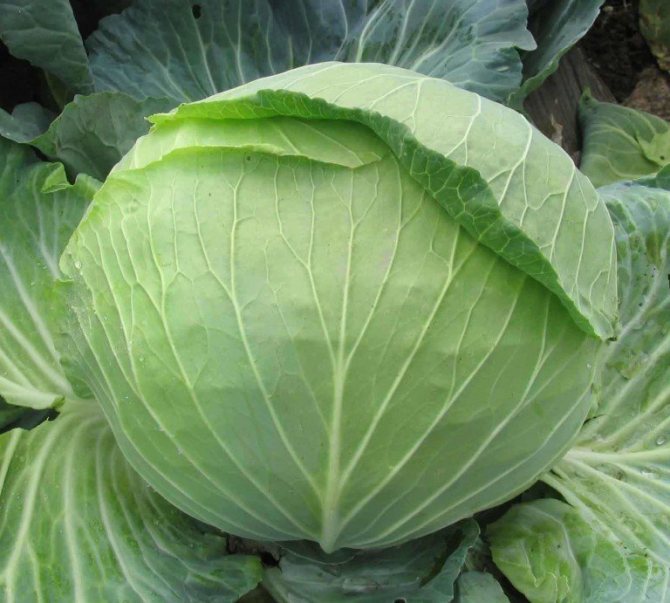

Late varieties grow in dense heads of cabbage, stay in the garden for a long time, so they also have to be sown early.
Medium-ripening cabbage is grown for autumn consumption (it is stored worse late) and fermentation, which is usually done in autumn. Therefore, these varieties are harvested in September-October, and in order for it to ripen by this time, the seeds can be sown a little later than in the case of late varieties. Sowing dates are around the end of April. It is obvious that all the above dates are approximate: in the south they move somewhat in one direction, and in the conditions of the Urals or Siberia - in the other.
At the end of the twentieth century, a boom began among gardeners, associated with the publication of various kinds of sowing calendars associated with the life cycle of heavenly bodies. The most popular was the Lunar calendar, which links the favorable and unfavorable days of gardening concerns with the constellation in which the Earth's satellite, the Moon, is located.
There is undeniable evidence that the growth of various crops is differently associated with the phases of the moon, but how serious this influence is is difficult to judge: as a rule, approximately the same harvest is obtained from those summer residents who strictly follow the calendars, and those who simply have no time to follow them ...
It is believed that the periods of new moon and full moon are forbidden for sowing, transplanting and any other operations with plants. These days, the flora seems to freeze and prepare for the change of the lunar phase. If you strictly follow the lunar calendar, then in 2019 the following days are allowed for sowing cabbage:
- in February - 21, 22, 25, 26;
- in March - 20, 21, 25, 26;
- in April - 18, 21;
- in May - 19, 24.
It would be sad to look at these dates (and they are given in many authoritative sources!). If you follow them strictly, then the most necessary time falls out of sowing: the beginning and middle of April. And if the gardener on the 18th and 21st should be at work ... Fortunately, other publications publish their versions of the calendar, less strict, and the April numbers in them look like this: 7, 8, 18, 20-21 April.
Well, that has improved, there are days at the beginning of the month. All this would be funny, but after all, after looking at a dozen magazines and Internet sites, you come to the conclusion that many write the way they want, and if this is so, then there is not much point in strictly following such calendars. There is a time - we focus on a favorite, trustworthy source. No - we sow when we have free time, relying on scientific data and our experience.
Preparatory work
Numerous gardeners grow at least one variety of cabbage on their property. In recent years, this culture has become even more popular. Broccoli, cauliflower, Peking cabbage, kohlrabi, white cabbage - all these types have a unique taste and useful qualities. Most varieties can be grown even in cold climates.
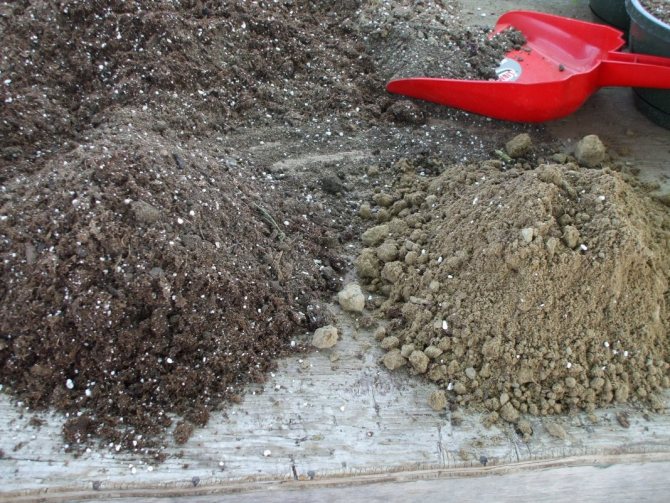

In warm areas, cabbage can be grown from seeds, but even there the seedling method will be more effective. Likewise, the richest harvest can be obtained. Night frosts and inappropriate conditions can easily ruin tender young shoots. In this regard, experienced gardeners prefer to grow cabbage using seedlings, which by the time of planting are already well established. However, in order to grow good seedlings, you need to know some subtleties, in particular, how to prepare the seeds for sowing, when to plant cabbage for seedlings in 2019 and how to grow cabbage seedlings. The answers to these and other questions related to the breeding of seedlings can be found in this article, prepared by the editors of the site
Preparing the soil
Before proceeding with sowing activities, it is necessary to carry out certain preparatory work. The first step is to prepare all the appropriate tools and materials.The resulting stage is soil preparation. First of all, it directly depends on how healthy and strong the seedlings will be. Land from the garden is not suitable for such purposes. There is a great chance of the presence of infectious microorganisms in it. Having planted cabbage in a similar soil, you can not even hope for a bountiful harvest. The plant will become infected at the first steps of growth, which is why it will not be able to grow normally.
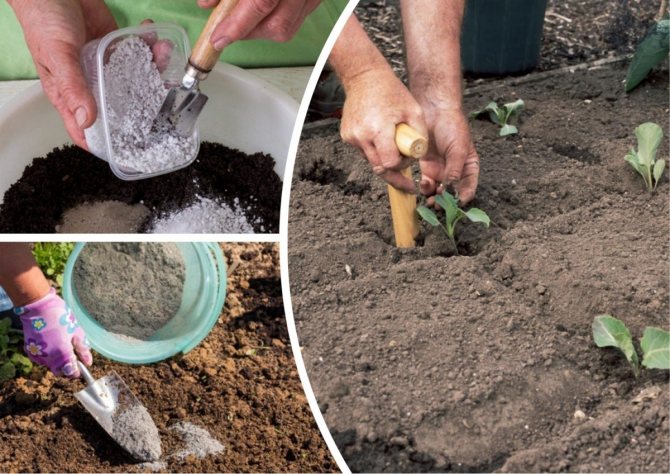

The land from the garden where the radish or radish grew cannot be used for growing cabbage.
In specialized shops, you can choose a ready-made earthen mixture. In order for the seedlings to grow well, they need a light, fertile soil. Sand and peat are also added to it. Gardeners saw that the higher the peat content in the soil, the better the seedlings grow. Therefore, some prepare agro-soil mixtures consisting of 75% peat. However, the best choice would be a similar composition:
- Sod land.
- Peat.
- Sand.
All components are mixed in equal amounts, and an excellent loose soil is obtained for breeding seedlings. There are other types of soil preparation. For example, you can add humus instead of sand. Wood ash may also work. In this case, add one tablespoon of ash to one kilogram of soil. It will not only serve as a feed, but also as a prevention of fungal diseases.
In order to prepare woody soil for seedlings with your own hands, you need to bury wood in the soil in the spring in such a way that the roots are at the top. In the summer, such soil will need to be dug two or three times. By next spring, the woody soil will be completely and completely ready for use.
Variety selection
Before buying seeds, decide what kind of cabbage you want to have in the end, for what and when you need it. It is on this that, first of all, the timing of planting cabbage for seedlings will depend. It's one thing if you want to taste early cabbage in salads, and quite another thing if you need cabbage for pickling and long winter storage.
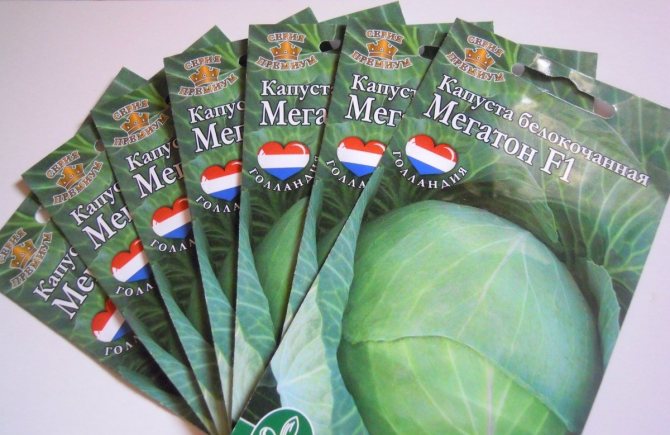

White cabbage is early-ripening, mid-ripening and late-ripening. Early species are low-yielding, they have rather small (weighing about one and a half kilograms) heads of medium density. Mid-season varieties of cabbage are suitable for both summer use and for salting, but cabbage of late types is the best choice for long-term fresh storage. Depending on the ripening time of cabbage, the timing of its sowing also differs - do not forget about it.
Sowing time selection
It makes no sense to sow cabbage seedlings in early January - it's too early, or at the end of May - it's too late. Every gardener knows this well-known truth. However, although we know the approximate dates for sowing seeds, sometimes it is relatively difficult to determine a specific date. Let's talk about everything in sequence.
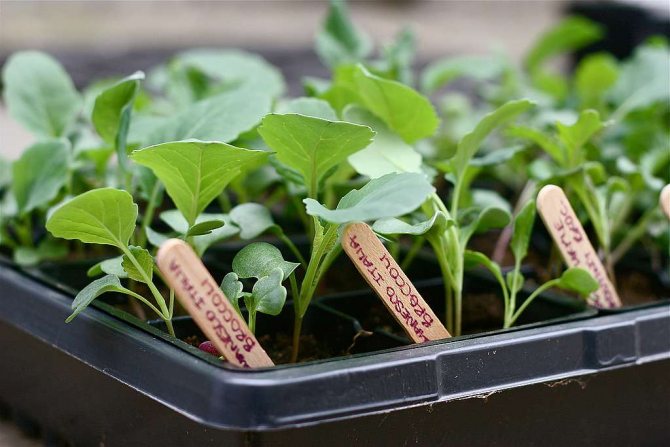

Do not forget:
- early types of cabbage should be sown for seedlings from the beginning of March until approximately the twenty-fifth to twenty-eighth of the month,
- seeds of medium species can be sown approximately from March twenty-fifth to April twenty-fifth,
- well, cabbage of late species - from the beginning to the twenties of April.
If such a timeline for sowing cabbage seeds seems too vague and obscure to you, then do not worry, just follow the recommendations given in this article and you will succeed.
Well, we will give you one more hint: it is possible to set the time for sowing cabbage for seedlings based on the fact that approximately ten days pass from the time of sowing the seeds to the emergence of seedlings (plus or minus a few days), and from the emergence of seedlings to the time of planting it must take more approximately fifty to fifty-five days. Based on this, it is necessary to sow cabbage for seedlings sixty to sixty-five days before planting in the ground.
It is quite simple to pick up seeds for sowing cabbage for seedlings, even a beginner can cope with this, because the process is indistinguishable from a similar choice in other crops.
Seed preparation
If the seeds of our own production or obtained from the hands, then they are sorted, selecting for sowing those that are larger than one and a half millimeters. Against fungal diseases, the seeds are kept for fifteen to twenty minutes in water with a temperature of + 48 + 50 C. Then immediately place them in cold water for one to two minutes. After that, the seeds must be dried to a loose state. It is even safer to use Fitosporin-M for seed dressing or a mixture of Alirin-B with Gamair (one tablet per liter of water). The duration of any of these treatments is eight to eighteen hours at room temperature.
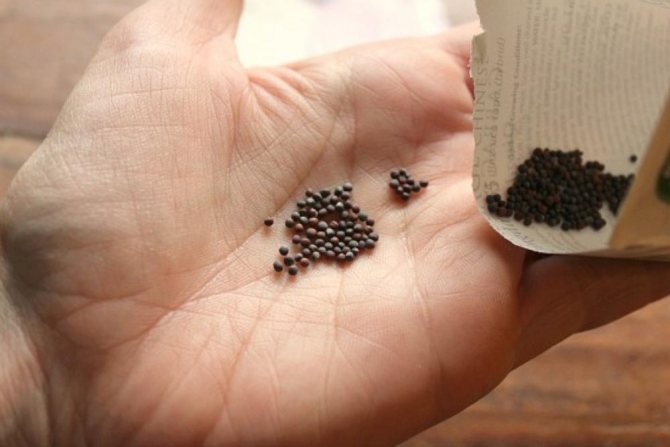

If the seeds are bought in a store, then the leading seed manufacturers always show on the bag if the seeds have passed the pre-sowing treatment and do not need to be heated or treated. Cabbage seeds retain their germination capacity for three to four years. In the fifth year, with excellent storage, the seeds can also give inputs, but the plants give weak, "painful seedlings" that are not able to withstand various unfavorable conditions and cannot get a good harvest from it.
Sometimes seeds, mainly of popular leading companies, can be “painted in different colors” - this is the so-called seed inlay. They have already passed full preparation. They do not need to be heated, soaked, or pickled. They also do not need to be kept in a nutrient solution. Such seeds are sown immediately in dry form (if you carry out the “pre-sowing actions” described above, then they may lose germination rates).


Before sowing, it is advisable to keep non-encrusted seeds for twelve hours in any nutrient composition: lignohumate or potassium humate; a solution of trace elements; Epin; Zircon. Then the seeds are rinsed with clean water and put on hardening in a cold place for a day, with an air temperature of + 1 + 2 C. This enhances germination and increases the frost resistance of plants.
How to prepare cabbage seeds for sowing
To a great extent, the success of the future cabbage harvest depends on good seedlings, and they, in turn, are obtained from high-quality seeds, so get the best quality seed.
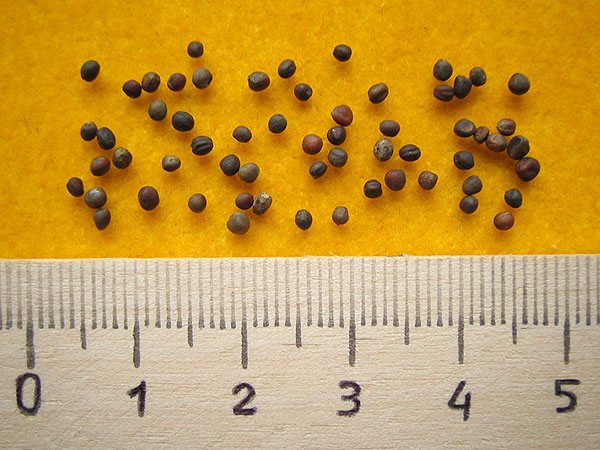

Cabbage seeds
Before planting seeds, you must first prepare them. At the stage of sowing seeds, using certain actions, you can significantly reduce the likelihood of further serious diseases of cabbage, which will allow you to get healthy and hardy seedlings.
When buying an already processed planting material (which is usually indicated on a bag of seeds), you only need to hold them for 20 minutes in water heated to + 50 ° C. You can eliminate the likelihood of fungal diseases of cabbage if you cool them in cold water within 5 minutes after warming up.
Note! Some varieties of cabbage do not require wetting the seeds before planting. Be sure to consider this point.
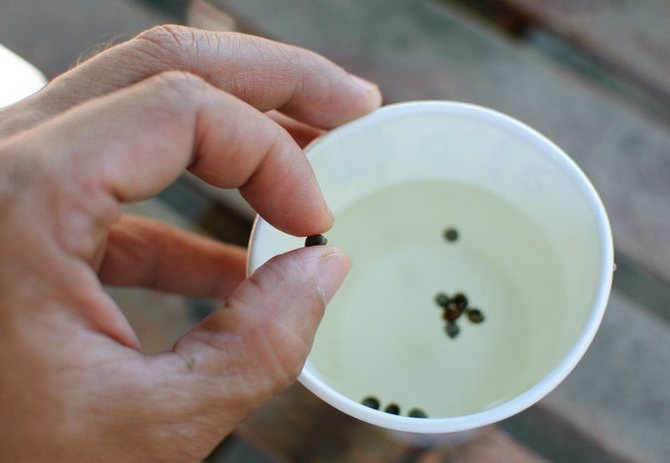

Soaking seeds is a classic method to speed up seed germination.
Planting care
To grow high-quality and strong seedlings, it is important not only to plant them correctly, but also to provide competent and timely care during growth.
Lighting
This plant does not have enough daylight on the windowsill. Usually, the seedlings are supplemented with an LED lamp at home. In general, plants require daylight: at least 14-15 hours a day.
Moistening the soil
Water the plants regularly because the crop loves water. Moistening is carried out as the soil dries out. To eliminate the risk of overflow, the soil is periodically loosened. Additionally, the procedure increases the moisture and air permeability of the soil.
Temperature regime
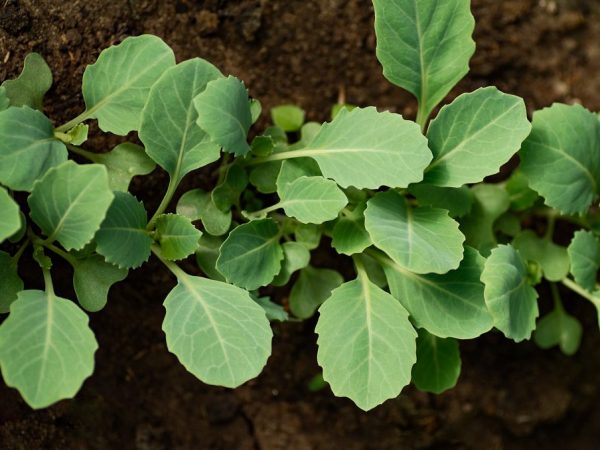

Seedlings are hardened before planting
Correct cultivation of seedlings implies compliance with the temperature regime.Until the sprouts appear, the temperature in the room should be at least 18 ° C. After the seedlings sprout, it is reduced to 15-17 ° С in the daytime, 8-10 ° С at night.
Such sudden temperature jumps are necessary to harden the plants and prevent them from stretching. In such conditions, white-headed plant varieties develop well.
A sharp decrease and increase in the temperature regime leads to a decrease in yield. The temperature regime may fluctuate, but should be within 5-8 ° С regardless of the time of day.
Food
If you are going to sow seeds for seedlings, it is worth stocking up on fertilizers for it in advance. A balanced diet, consisting of all nutrients, is necessary for cabbage for full growth, development and resistance to disease.
While the plants are in the apartment, they are fed:
- The first meal is carried out a week after the pick. Prepare the following solution: ammonium nitrate, potassium - 2 g of each component, phosphorus - 4 g. Mix dry substances, dissolve in 1 liter of water. This volume is enough to feed 60-70 plants. Before fertilizing them, the soil is moistened. This prevents the risk of burning young roots.
- The second meal is carried out 15 days after the first. As a top dressing, the same solution is used as in the first case, only the dose of the substances used is doubled. If the seedlings turn yellow after the first feeding, use a different composition of feeding, for example, fermented manure: 1 liter is dissolved in 10 liters of water.
- The last feeding of the seedlings is carried out a couple of days before transplanting to the garden. Prepare the following composition: potassium - 7 g, phosphorus - 5 g, ammonium nitrate - 3 g. All this is mixed and dissolved in 1 liter of water. This hardening top dressing works well on the seedlings and helps them to take root more easily in the open field. Instead, they use a ready-made version - the drug "Kemira Lux".
Hardening
When the seedlings grow, hardening is carried out. This procedure has a beneficial effect on the growth of the root system and improves the adaptability of plants in open soil.
Hardening is carried out 10 days before transplanting to the garden. On the first day, on the window where the seedlings stand, open the window. For the first time, 2-3 hours of airing is enough.
In the next few days, the seedlings are taken out onto the balcony and placed under the sun. At lunchtime, it is shaded so that the tender and young leaves do not burn under the scorching sun.
On the sixth day, the plants are stopped from watering and taken out to the balcony. In this room, cabbage is kept before transplanting into open soil. As it dries, the soil is moistened.
Planting of plants is carried out at the stage of the appearance of several leaves. Before diving into the garden, the soil is abundantly moistened so that the plants can be easily removed.
Disease prevention
How to cope with diseases of cabbage seedlings:
- To destroy the black leg, the soil in the seedling boxes is dried, the plants are sprinkled with ash, then the substrate is loosened.
- To destroy root rot, seedlings are treated with Rizoplan or Trichodermin.
- To destroy the cruciferous flea, seedlings are treated with Intavir.
Purchase of seeds and seedbed preparation
What kind of harvest of early cabbage can be grown depends largely on the seeds, so you should approach them responsibly. It is better to purchase such products in special stores for gardeners and be sure to check the expiration dates. Seeds on the market can be bought cheaper, but in this case, there is a high probability that they are defective or improperly stored and damp.
Among the most popular varieties of early cabbage, it is worth highlighting:
- June;
- "Ditmarskaya";
- "Legate F1";
- "Kraft";
- "Kazachok F1";
- "Present".
Such hybrids ripen, on average, in 120 days and already at the beginning of summer they delight with fresh and juicy heads of cabbage. At the same time, these varieties are quite frost-resistant and productive.
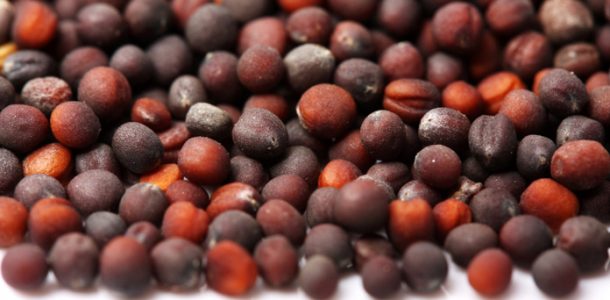

For sowing, only the largest seeds should be selected that will definitely sprout.This task can be simplified by placing the seed material in a 3% saline solution for 5-10 minutes: the full-weight fractions will settle to the bottom, and the empty ones will float. Selected seeds should be disinfected to reduce the risk of fungal infections in seedlings. To do this, pour the seeds with water heated to 50 degrees for 20 minutes, and then cold for 1 minute. Next, they need to be immersed for 12 hours in a solution of trace elements, then rinsed, dried and left in the refrigerator for a day.
Transplanting seedlings into the ground
The quality of the seedlings and their timely transplanting to the garden bed largely determine the future harvest of vegetables.
Disembarkation dates
By the time of planting, the seedlings should grow up to 10-15 cm, develop 2-3 pairs of true leaves and prepare for life in new conditions.
In the central regions, hardened seedlings are transplanted to the site from April 20 to May 15, as soon as prolonged heat is established (15 ° C).
Plants will withstand even a short-term drop in air temperature to -3 ° C in the morning. However, if it is still cold not only at night, but also during the day, the landing will have to be postponed until warming. In the south of the country, a transplant to the garden bed is carried out in early April, in the north - in late May - early June.
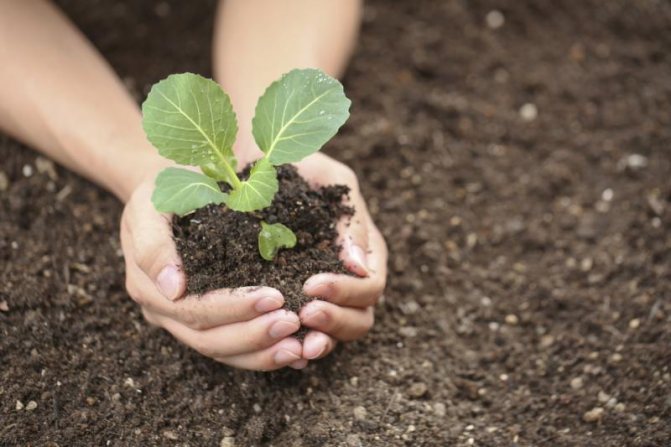

Seedlings ready for planting in the ground should have 2 pairs of true leaves
Planting scheme for seedlings of early ripe cabbage on the site
For cabbage, choose a well-lit area, dig it up, add 100 g of superphosphate / m2, a bucket of humus, with a strong acidity of the soil, add 500 g of lime or ash. The culture grows well on loose loamy soil after potatoes, carrots, onions, cucumbers, pumpkin seeds and legumes. White cabbage is grown in an ordinary way. Rows are marked on the ridge, holes are made and moistened by adding 500 ml of water to each.
Seedlings of early maturing varieties are planted on a garden bed according to the scheme 60x35-40 cm.
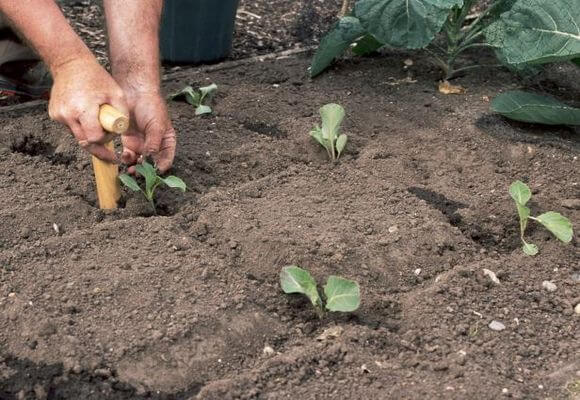

White cabbage is grown in an ordinary way according to the scheme 60x40 cm
Leaving less space between the plants allows you to harvest more heads, but at the same time they will be smaller. In thickened plantings, the maturation of the heads is delayed, and with strong compaction, they are not formed at all.
Seedlings are removed from the container, without shaking off the earth, and placed in a hole. Sprinkle to cotyledon leaves and cover for 2-3 days with non-woven material to protect from too active spring sun or night cold snaps.
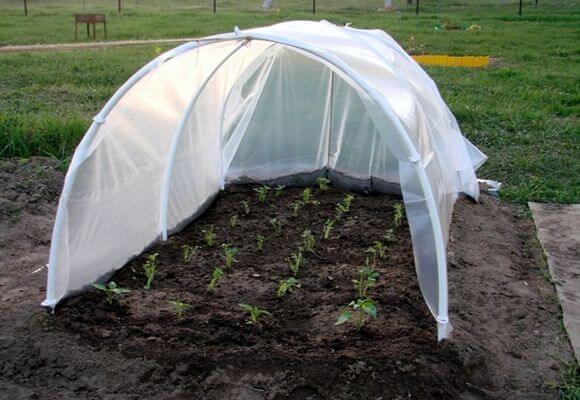

Above a bed with planted seedlings, stretch agrofibre on arcs to protect from the sun and cold snap
Features of seedling cultivation
In fact, all cabbage varieties are grown using seedlings using the same technology, and the differences may only be in unimportant nuances. But regardless of whether it is early or late varieties, the work begins with the preparation of the seeds: they need to be sorted, then pickled, that is, soaked in hot water for about twenty minutes, then another two in cold. At the end, the seeds should be thoroughly dried.
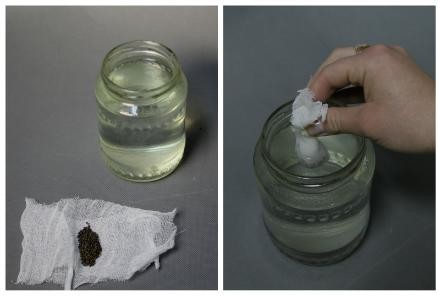

To disinfect cabbage seeds, you need to soak them
Important information! Only the seeds of "their" production need to be treated, while the seeds purchased in the store do not need to be prepared, since the producer himself has already done this.
Transplanting cabbage seedlings
Any experienced gardener will say that it is possible to grow this crop in one place for a maximum of two to three years, after which the site should "rest" for about five years.
If speak about precursors of cabbage, then the best of them include:
- tomatoes;
- potatoes;
- beets;
- beans;
- cucumbers.
Choose a well-lit area of the garden for planting. Do not forget that the plant responds well to organic feeding - apply them in spring, and in the first year (if we are talking about early species) or in the second (if about later).
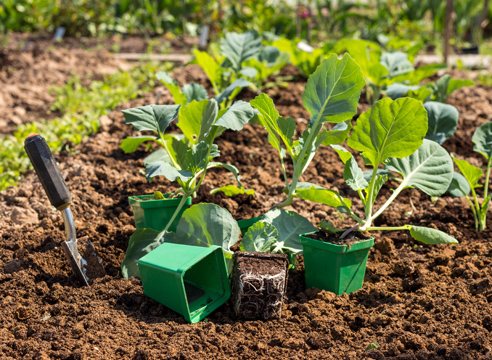

If the seedlings are strong and well seasoned in the fresh air, then you can plant them in warm weather, even if frosts are possible in the morning.
The planting scheme itself depends on the specific variety and should look something like this.
- Early red and white varieties should be planted according to the 30x40 centimeters pattern.
- As for the Savoy cabbage, for it this indicator should correspond to 70-50 (late / medium varieties) and 70x30 centimeters (early).
- Broccoli should be planted according to the 40x60 scheme (so that the side shoots grow) or 20x50 centimeters (so that the heads grow).
- For early kohlrabi varieties, a 25x35 centimeters scheme should be used.
- For Brussels sprouts, this is 60x70 centimeters.
- Finally, the cauliflower should be planted in a checkerboard pattern, approximately every 35-40 centimeters (although a 25x50 centimeter pattern can be used).
Harvest
The ripeness of cabbage heads is determined by touch. The heads of cabbage should look firm and firm. They are cut with a knife, leaving the lower leaves and a small part of the stump.
The ripeness of broccoli heads can be determined by the size, color and density of the head. You need to cut off the heads directly with a stem of about 7-10 cm in the early morning. Harvesting must be completed before frost.
A ripe cauliflower inflorescence should be 10-12 cm thick and firm enough. Cut with a very sharp knife along with the lower leaves. If the plant is underdeveloped, it is harvested along with the root system and allowed to ripen by planting in a greenhouse or cellar.
Important! It is very important not only to grow properly, to harvest, but also to be able to preserve it. Store the harvested fruits in a cool, dark and dry place.
Cabbage is not considered a difficult crop to cultivate. If you follow all the recommendations for planting and care, it is possible to get large yields and enjoy a healthy and tasty vegetable all autumn and winter.
Is it necessary to grow cabbage through seedlings
The question of the compulsory cultivation of cabbage seedlings is connected with two points: what kind of cabbage we are talking about, and in which region we live. The fact is that many late varieties of white cabbage have a life cycle of about six months, or even more. This means that even if the harvest is planned for mid-October, it is necessary to sow seeds in early April, which is difficult to do directly in the garden in the middle lane. Early varieties stay in the garden for a much shorter time, but if they are sown immediately to a permanent place, then the harvest can no longer be called early.
However, it turns out that even in the southern regions, where March sowing in the garden is quite possible, cabbage is often grown through seedlings; however, they do not do it at home. They just sow seeds in a garden bed, and then plant them, that is, they actually grow through seedlings. What for? The fact is that with a transplant, cabbage heads work better: a seemingly traumatic operation is only beneficial to the seedlings.
Is it possible not to bother and immediately sow seeds in the holes in a permanent place, and harvest in the fall? You can do that too. But often with such a simplified approach, the plants are weaker (their roots do not develop so well), and as a result, the yield is reduced. Thus, it should be recognized that growing cabbage through the seedling stage is optional, but highly desirable.
How to transplant cabbage seedlings into a greenhouse
A greenhouse is great for growing a plant, but it is necessary to create optimal conditions for cabbage seeds, and first of all, this is the soil. It is preferable to choose a composition containing humus, coarse river sand and sod (or garden) soil, in a ratio of 2: 1: 1.
The substrate can be enriched with crushed charcoal (two large spoons per square meter) - this will prevent the development of diseases. Superphosphate, ammonium nitrate and potassium sulfate (45, 15 and 20 g per square meter) are also added.
Sowing seeds is reduced to the following steps:
- water is poured into the prepared furrows;
- seedlings are planted at a distance of 1 cm from each other, 2 cm are left between the rows, if a pick is provided;
- an interval of 3 cm is observed between the seeds, and 5 cm between the rows, if transplantation is not planned;
- plantings are sprinkled with soil, and for the accelerated emergence of seedlings, in addition, they are covered with cellophane.
If different varieties of vegetables are planted, it is advisable to leave notes so that there is no confusion in the future.
For the planted plants, it is also necessary to create acceptable conditions. It is important to adhere to a certain temperature regime, providing for a daytime temperature of 15-17 degrees, and a nighttime temperature of at least 7 degrees. On rainy days, an air temperature of about 12-15 degrees is allowed. After emergence, the temperature should be adjusted downward to 7-9 degrees.
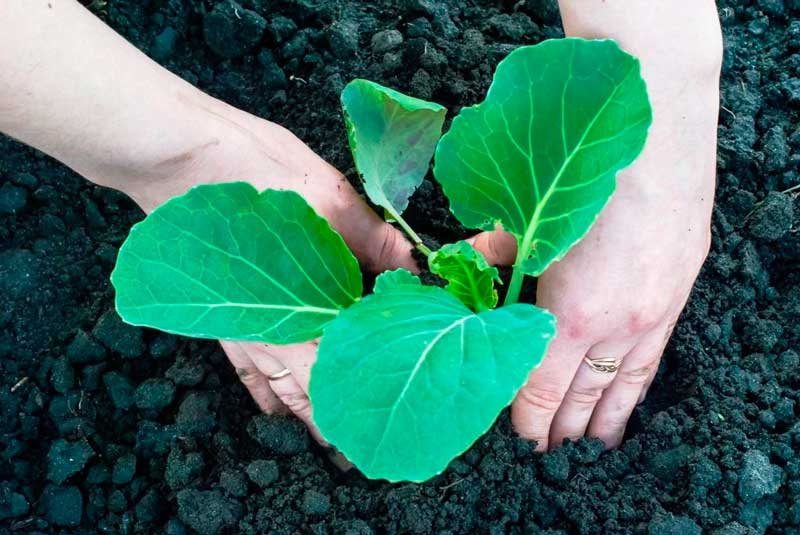

Where to sow - there is a choice
Seeds can be sown taking into account the transplant (in a small container, dense sowing, the seedlings will then need to dive) and in portioned containers (pots, cassettes, tablets), where the seedlings will grow before transplanting to the garden.
The most convenient and easiest way is to grow seedlings in peat tablets. Fill them with water, after a few minutes you can already sow.
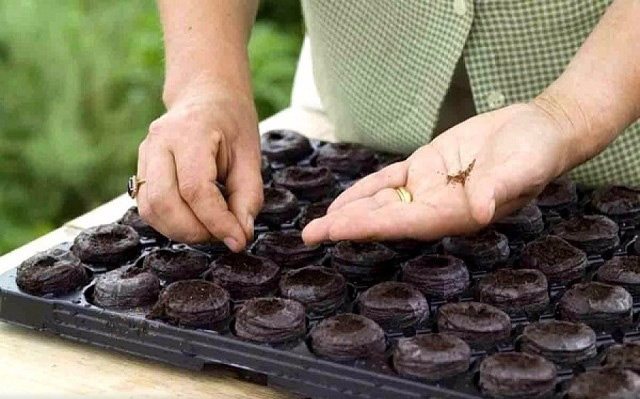

The second place in the list of popular methods of growing seedlings is occupied by plastic cassette containers. The seedlings grown in them can also be planted in the garden without damaging the roots.
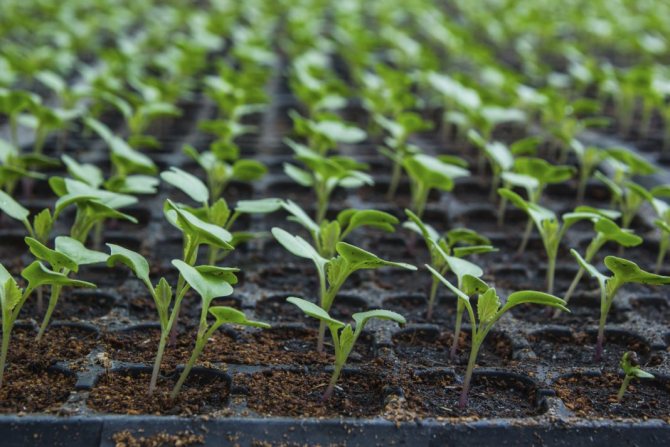

When preparing the soil for seedlings, use purchased mixtures in half with soil from the garden. The plant will initially adapt to the characteristics of your garden.
Sowing dates for cabbage seedlings
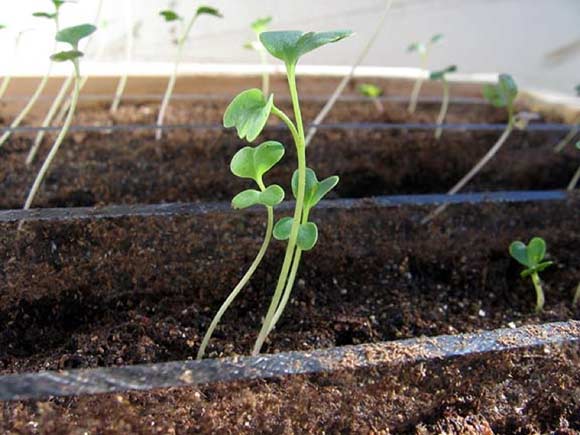

Before sowing cabbage for seedlings, you should think about the place of its cultivation. Will it be open ground, a greenhouse, an insulated balcony. The landing time depends on the choice.
Sowing dates
From the first shoots, it will take at least 100 days to get a ready harvest. At home, seedlings will take from 25 to 60 days. Therefore, knowing when spring comes in your area, you can calculate the sowing time. In the middle lane, sowing falls at the beginning of March for white cabbage, cauliflower, sown a week later.
Soil preparation
Experienced gardeners are advised to prepare the potting mix in the fall. It must be kept in an unheated room: garage, veranda. Winter frosts will kill pathogenic microbes, larvae, and the soil will be ready for use without heat treatment. For a week, you should bring the mixture into the house and keep it warm for 7 days. Then, re-expose to frost for 2 days.
The soil mixture is prepared from the following ingredients: add 10 tbsp. To 10 kg of sod land. tablespoons of ash. To obtain it, only plant waste is used: sunflower, straw. Ash will work not only as a source of trace elements, but also as an antiseptic and prevent black leg disease.
The base can be peat with the addition of river sand 1: 1. The nutrient mixture can be any, the main thing is that the earth is breathable and fertile. It is undesirable to add organic matter and mineral fertilizer to the mixture.
You can also use commercially available cabbage mix or all-purpose soil.
The reaction to acidity of self-preparation and purchased soil should be neutral pH 6.0-6.6.5. In both cases, it must be checked with a device that can be purchased at the same store.
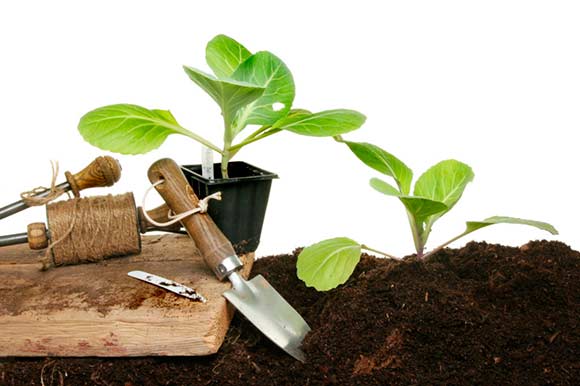

Seed preparation
When purchasing seeds in a specialized store, you should pay attention to a well-known manufacturer. Look at the description and release date of seedlings. Cabbage remains viable for 4 years. The producer prepares the seeds for sowing without additional processing.
Some gardeners collect seed at home. In this case, you need to know that early varieties are ready for harvesting seeds 170-225 days after germination.
Cannot harvest hybrid seeds. The next generation does not retain maternal traits. Therefore, hybrids are bought every year from the manufacturer.
Seeds collected in their area must be processed before sowing.
Calibration
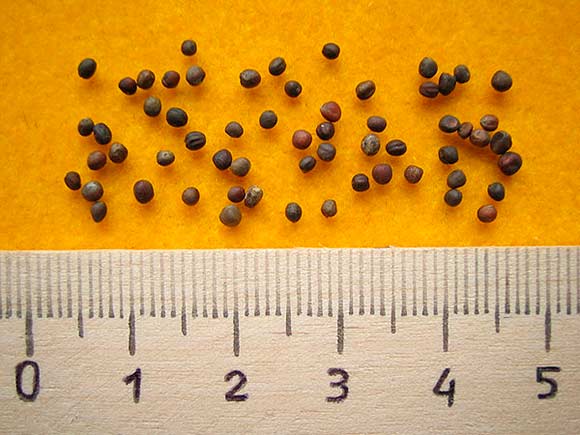

You can check the quality by visually calibrating large seeds from small fractions.But since the seeds are very small, it is better to use an easier and more popular method.
In a three percent solution of salt and water, lower the seedlings. Stir the entire contents well. After a few minutes, it will be necessary to catch the barren flowers from the surface layer and discard. Quality seeds will remain at the bottom. They are pulled out and dried.
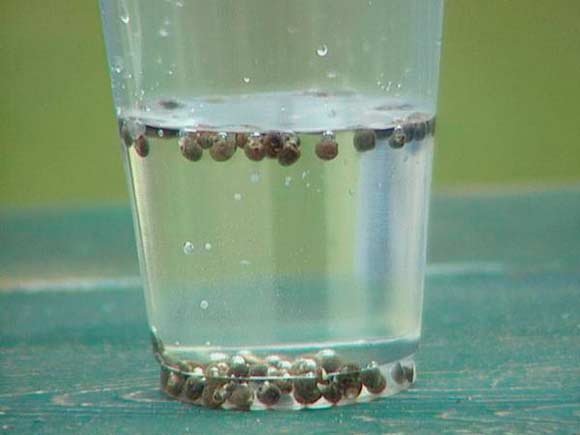

The third calibration method is with a plastic stick. It is electrified and brought to the seeds. The barren flowers will immediately stick to the stick.
Disinfection
They protect seeds from diseases in two ways. In the first method, the seed is sprayed with water and pesticides are applied. The second method: alternately dip the seeds in hot water for 15 minutes and immediately in cold water for 2 minutes.
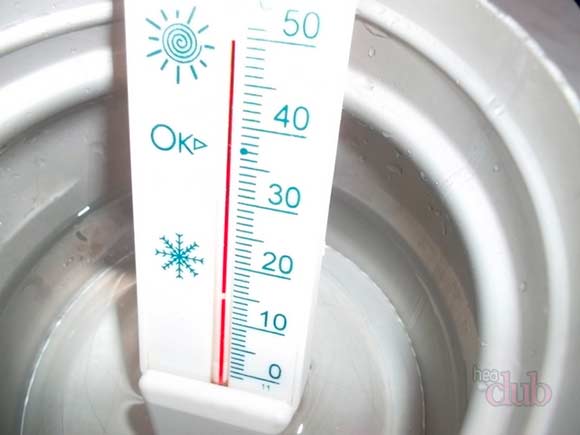

Germination
Seed material is poured with water for half a day. Then, the water is drained and sent to the cold 0 ... + 3 degrees C for a day.
Hardening
For early varieties, hardening is useful. The swollen seeds are exposed to a temperature drop at intervals of 12 hours for 5 days. The first half of the day is + 18 ... + 20 ° С, the second - + 1 ... -3 ° С.
Sowing
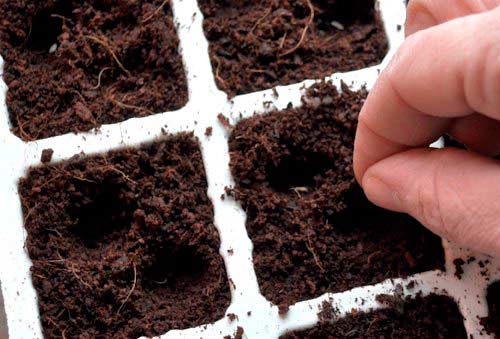

Cabbage is grown with and without a pick. For this, prepare large containers or individual cups.
The containers are covered with soil 4 cm, leveled and grooves are made with a step of 3 cm. Grains are sown into the grooves to a depth of 1 cm at a distance of 1.5 cm. They are covered with the same soil from above.
The containers are covered with glass and placed in a warm place with a temperature of 20-22 ° C without access to direct sunlight.
If sowing is carried out in separate pots, then 2 seeds are thrown into each container. After growing up, weak specimens are pinched. The sowing process is carried out 4 days later than in boxes.
Early cabbage - description of varieties, characteristics
Varieties and hybrids of early maturing varieties of cabbage have common characteristics:
1. The ripeness period ranges from 70 to 110 days. To speed up the ripening process, gardeners grow seedlings at home. Fresh vegetables can be seen on the table in the early days of June. 2. Low yield compared to late varieties. 3. Early ripe specimens differ in structure from other varieties. They have it looser and more juicy. 4. Used in fresh cooking, for making cabbage rolls, soups. 5. Disadvantages of cabbage - cannot be stored for a long time and is not suitable for pickling for the winter.
In terms of the number of species, early varieties are inferior to cabbage with a late ripening period. Gardeners prefer the following types.
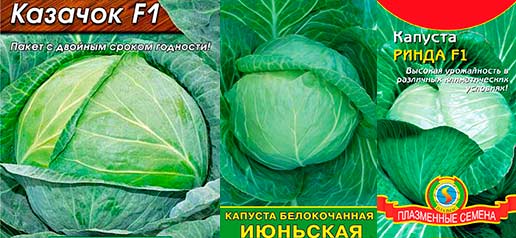

Rinda F1... The hybrid has established itself in the southern regions. The crop is harvested here twice. After the first harvest, the next batch is sown. They speak well of her in temperate zones.
The heads are medium in size, have an amber color, the leaves are large, spreading in shape. The structure of the fruit is friable with a pleasant taste.
The hybrid endures cool spring weather.
Under the right storage conditions, the vegetable will delight the owner for four months. The room must maintain humidity within 71-85%, temperature +8 degrees C.
June. The growing season of cabbage lasts 92-100 days. Therefore, already in June, gardeners receive the first harvest of the product.
Heads of cabbage ripen with a flat circle. The structure of the inside is medium, the color of the leaves is green. Weight ranges from one kg to 2.5. The vegetable is capricious to grow. Reacts to changes in air humidity, soil. If you don't cover the cabbage overnight in time, the forks will crack.
But to withstand short-term frosts up to - 5 degrees C, makes it possible to plant a crop in open ground at an early date.
It is used fresh in cooking, for the preparation of juices, soups, cabbage rolls, pickling for a short time.
The yield of the variety is from one square meter. meter 7 kg. Moreover, maturation takes place amicably.
Cossack F1... Breeders have created a hybrid with improved characteristics. The fruits are not afraid of changes in air and soil moisture, therefore, the heads of cabbage do not crack.They have immunity to diseases of the black leg, mucous, vascular bacteriosis.
The fruits are elliptical, up to 18 cm in diameter. The density of the head of cabbage is average. The hybrid can be identified by the color of the leaves: the outer part is green with a bluish overflow and a waxy coating, the inner side is snow-white. They taste crispy and sweet.
The duration of maturation of a head of cabbage is 112 days. The first shoots are considered the starting point. Productivity - 5 kg per square meter. All fruits ripen together, which makes it possible to free up the site for another culture.
Seed preparation for sowing
Somehow, only home-harvested seeds are specially prepared. Large agricultural firms, the main suppliers of seeds to the market, usually sell already disinfected seeds. Therefore, there is no need to etch them.
Colored paint on granulated seeds is a shell made of special fertilizers.
Homemade seeds can be disinfected in several ways:
- pour them for 30-60 minutes with hot water (you can determine the temperature with your finger - how much you can withstand) about 550C,
- pink solution of potassium permanganate,
- baking soda solution (1 teaspoon per glass of water).
After soda and potassium permanganate, rinse the seeds and put on germination, or plant immediately.
Germinating seeds
After disinfection (or without it), it is advisable to germinate the seeds before planting. It's very simple - wrap them in a damp cloth and leave them on for a couple of days. It is necessary to ensure that the cloth does not dry out. The seeds are ready for sowing when the roots hatch at about 10%.
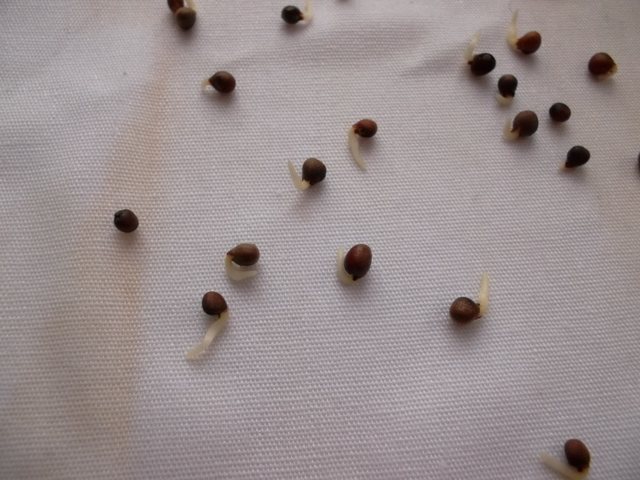

If for some reason it is not possible to plant the sprouted seeds in the ground, put them in the refrigerator on the vegetable shelf in the same damp cloth. Such "hardening" will even be beneficial. The experienced stress gives plants additional endurance and resistance to various natural factors (like any hardening of the body).
Soil preparation
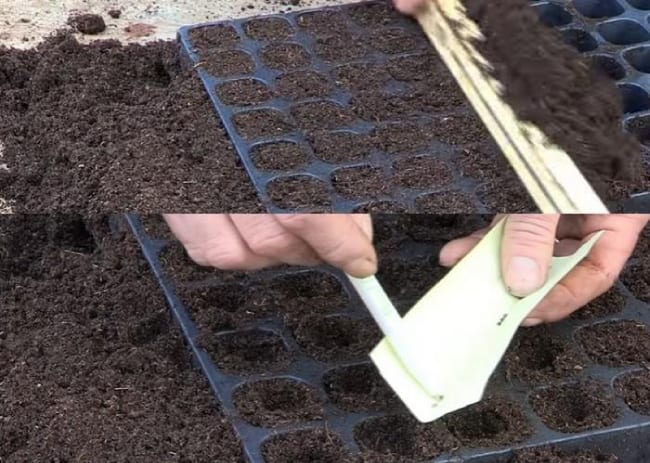

Sowing cabbage for seedlings
It is best to use a soil with an acidity level of 5.5 to 6.5 pH. You can create a substrate yourself according to the following scheme: a layer of manure or humus is placed on the bottom of the pot - 200 g (the volume of a plastic cup). Wood ash is laid on top (no more than a matchbox in volume). Sprinkle with sand on top so that it can cover ash and manure.


